- Prof. Development

Archaeological Dig & Excavation Volunteer Programs Around the World

By Robin Van Auken
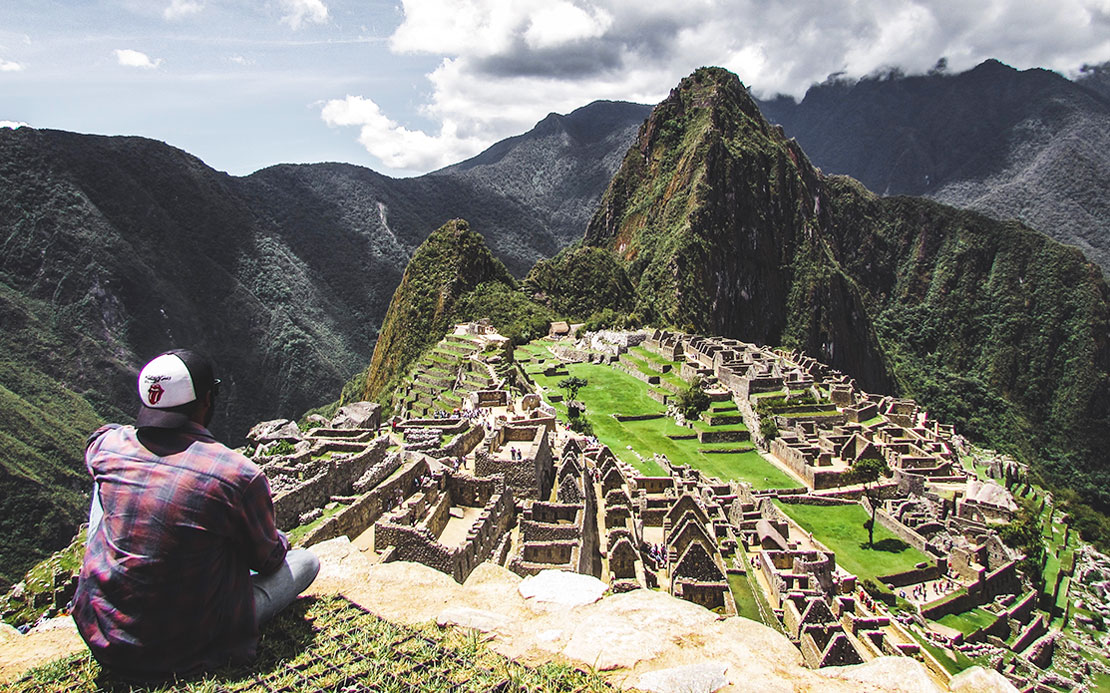
Updated for 2023-2024
Thinking about traveling abroad? You’re not alone. People have been traveling for 2 million years. It began with Homo erectus , walking out of Africa in the early migrations. Then other archaic people followed, like H. heidelbergensis , the likely ancestor of modern humans, around 500,000 years ago.
Our ancestors spread to other continents, and along the way, they invented houses and built communities. They invented agriculture and changed the landscape. They invented religions and built temples. They created the special places we love to visit today, leaving a rich legacy of hope for a bright future.
We know about the paths early people took, and the things they made, from the development of the first stone tools at Lomekwi in East Africa 3.3 million years ago, thanks to the work of archaeologists. These scientists interpret the story of early people because there was no written record left behind, with the exception of handprints and animal paintings on cave walls. The historical record began with the system of writing, which began around 5,000 years ago in modern-day Iraq. Then people began writing their own stories. And even then, archaeology is able to fill in the gaps of those stories.
Some people consider archaeology a form of time travel – a way to peer into the past to gain a richer understanding of our world today, and our place in it. Are you curious about ancient people, wondering about who they were, where they came from, and what struggles and successes they encountered along the way? Here’s a quick survey that may help to unleash your inner Indiana Jones .
- When your grade school class visited the local museum, were you the student who lagged behind, staring at the mummy sarcophagus and ogling the artifacts in exhibit cases?
- When other kids were tuning into Nickelodeon, were you watching the History Channel while flipping through old issues of National Geographic?
- Do you roll your eyes and correct people when they say archaeologists dig for dinosaurs? (Inward sigh) “No, that’s paleontology.”
- Do you walk with your head down, your eyes constantly searching the ground in front of you for an unusual object?
- Do you solve puzzles and mysteries easily, because you love patterns and find them in all sorts of places?
- Do you browse the Duluth Trading Co. website for cargo pants and work boots instead of Net-a-Porter for literally anything else?
- Do you ever wonder how the ancient people of Cambodia constructed Angkor Wat, but more importantly, why? What is the meaning of Stonehenge? Were the pyramids of Egypt only burial chambers for the rich, or was there a more significant reason for the decades spent building each one? Why did people brave the cold and ice to cross the Bering Straits and populate the New World?
If these questions and others like them stir your interest, then you could be harboring the “Scientia Antiquitatis” gene, and there’s only one thing to do to find out. Get into the field and test yourself with an adventure that combines meaningful travel with history .
Archaeologists study people through time, from 3 million years ago to yesterday, by excavating, recovering, and analyzing material culture. Material culture is another word for artifacts and features – anything that was made or used by humans. Through archaeology , we can understand where and when people lived on the Earth, but also why and how they have lived.
Archaeology isn’t for the faint of heart. There are heat and cold, and rain and snow, and dirt and lots and lots of mud. There are bugs and snakes and the occasional bull that chases you out of their field. Your crew consists of people who look like construction workers but talk like scientists because that’s what they are. They rigorously study the cultures and lifeways of prehistoric and historic people. Like cultural anthropologists, they’re interested in what people do and why they do it, with one caveat: the people they study are long gone.
If you’d like to know more about archaeology, you can enroll in a university course, or you can check a book out of a library, but there’s nothing comparable to visiting and volunteering at an archaeology site. If you’d like to know more about important archaeology sites you can visit, and some that you can volunteer with, check out the archaeological volunteer opportunities below. One program you’ll definitely want to check out is Maximo Nivel’s Anthropology university program in Latin America , which include excursions to archaeological sites. With the exception of an actual archaeological field school, these may be the closest you’ll come to taking part in an archaeological dig and finding your own fortune and glory . If a university course isn’t for you, then check out GoEco, which offers an archaeological volunteer project near Rome and Volunteering Solutions, which offers archaeology programs in Greece . If you’re a teenage volunteer or part of a group, then definitely check out Projects Abroad’s archaeology volunteer program in Peru .
Featured Volunteer Abroad Programs
International volunteer hq.

International Volunteer HQ (IVHQ) operates in more than 40 destinations worldwide and has placed more than 130,000 travelers on volunteer opportunities and adventure tours that heighten global awareness and cultural understanding. Founded in 2007, IVHQ offers programs in education and childcare, conservation and wildlife, community building, medical care, and much more. Volunteers are invited to stay abroad one week to six months, with affordable fees starting at just $20 per day.
Choose to work with IVHQ on a volunteer placement that gives you free time to visit archaeological sites, such as Angkor Wat, a UNESCO World Heritage Site in Cambodia. Or travel to Greece with IVHQ’s sister company, Intern Abroad HQ , and explore a variety of fields and rewarding career paths.
Cambodia Volunteer Programs and Archaeological Sites
IVHQ places travelers on several volunteer programs in Cambodia , a country with a rich history and magnificent, preserved temples. You can have a positive impact while you’re in-country, volunteering on a placement during the week, then traveling to Cambodia’s northern province of Siem Reap, to visit Angkor Wat, one of the most important archaeological sites of Southeast Asia. IVHQ’s volunteer programs in Cambodia include:
- Teaching English to school children
- Animal care at rescue centers
- Computer support
- Working with NGOs
- Special needs care
- Medical care
Orientation covers everything you need to know for your stay in Cambodia. Your coordinator will escort you on your first day volunteering, introducing you to the placement staff. Each day, you’ll be assigned a duty roster, with location and time at work dependent upon the project and location. You’ll stay with other volunteers in a shared house or homestay in Cambodia.
On weekends, take a tuk-tuk ride to the temple complex of Angkor Wat and learn about its thousand-year history and its significance as the largest religious monument ever constructed. Built around A.D. 1150 by the Khmer people as a Hindu temple dedicated to the god Vishnu, Angkor Wat was converted to a Buddhist site by the 13th century. Later, it even served as a military fortification. It is the pinnacle of Khmer architecture, a source of national pride, and is on the country’s national flag.
The 13th-century Chinese traveler Zhou Daguan wrote that the temple was constructed in a single night by a divine architect, however, archaeologists have determined that construction of the temple took place in the first half of the 12th century, during the reign of Suryavarman II (ruled 1113 – c. 1150). It was never completely abandoned, however, the encroaching jungle helped to hide and protect it from outsiders.
A number of countries such as France, Japan, and China are involved in various Angkor Wat conservation projects, hoping to preserve it for future generations and to protect it from the millions of tourists who visit the site each year. After your own visit to Angkor Wat, perhaps you’ll be inspired to learn more about Khmer architecture and how to read the bas-reliefs that depict the great epics of Hindu mythology. This program starts from just $360 for your first two weeks, and you’re invited to volunteer for up to six months. Learn more and apply here.
Intern in Greece
If you have four weeks or more to spare, spend them in Greece with Intern Abroad HQ, sister to IVHQ. Located along the Aegean Sea, you’ll be immersed in this amazing country’s history and its future. From outstanding opportunities that include GIS Mapping, Environmental Law, Communications and Media Relations, Marine Conservation, and more, there are plenty of internships that teach skills you can use in the field of archaeology.
You’ll stay in Samos and surrounding islands, situated on the Mediterranean Sea. Rich in Greek cultural and maritime history, you’ll learn something new each day when you visit the home of the Pythagoreion UNESCO World Heritage Site, and the birthplace of Pythagoras, Epicurus, and the astronomer Aristarchus.
GIS Mapping
Unlike chemistry or biology, archaeology didn’t exist as a separate science. It evolved as researchers “borrowed” theories and methodologies from other disciplines. In fact, it continues to evolve and adopt new technologies, including geographic information systems, or GIS, which is a computerized system designed to capture, store, manipulate, analyze, manage, and visualize all types of geospatial data. GIS has become integral in archaeology, as researchers study geospatial data through time. Brush up on the GIS software, ArcMap GIS, and use it in archaeology, or start your new career as a GIS technician, a cartographer, a surveying and mapping tech, or environmental engineer.
Environmental Law
Now more than ever, archaeology relies upon the dynamic work of conservation, and preservation requires an understanding of international laws and policies. If you’d like to learn how to use legal work to protect and help the environment and significant archaeology sites, this important internship can place you on the path to a career as a research scientist, and educational outreach coordinator, and environmental scientist or a lawyer.
Media, Communications & Public Relations
Public Archaeology is an important component of the practice because people need to know what is worth protecting. If you enjoy communications, you can be creative and put your PR talents to good use for the environment and conservation efforts in Greece and beyond. Learn how to tell a great story through the tools of film, written word, photographs, and websites on this internship. Other careers that use these skills are education and outreach, NGO administrator, marketing managers, filmmaker, graphic designer, photographer, writer, public relations consultant, photojournalist, web designer, and more.
Fees for a four-week internship in Greece begin at $1,125 and includes 24/7 in-country support, airport pick-up, program orientation, internship placement, learning support service, accommodation and meals. Read more about Greece and the variety of projects that Intern Abroad HQ offers by clicking here.
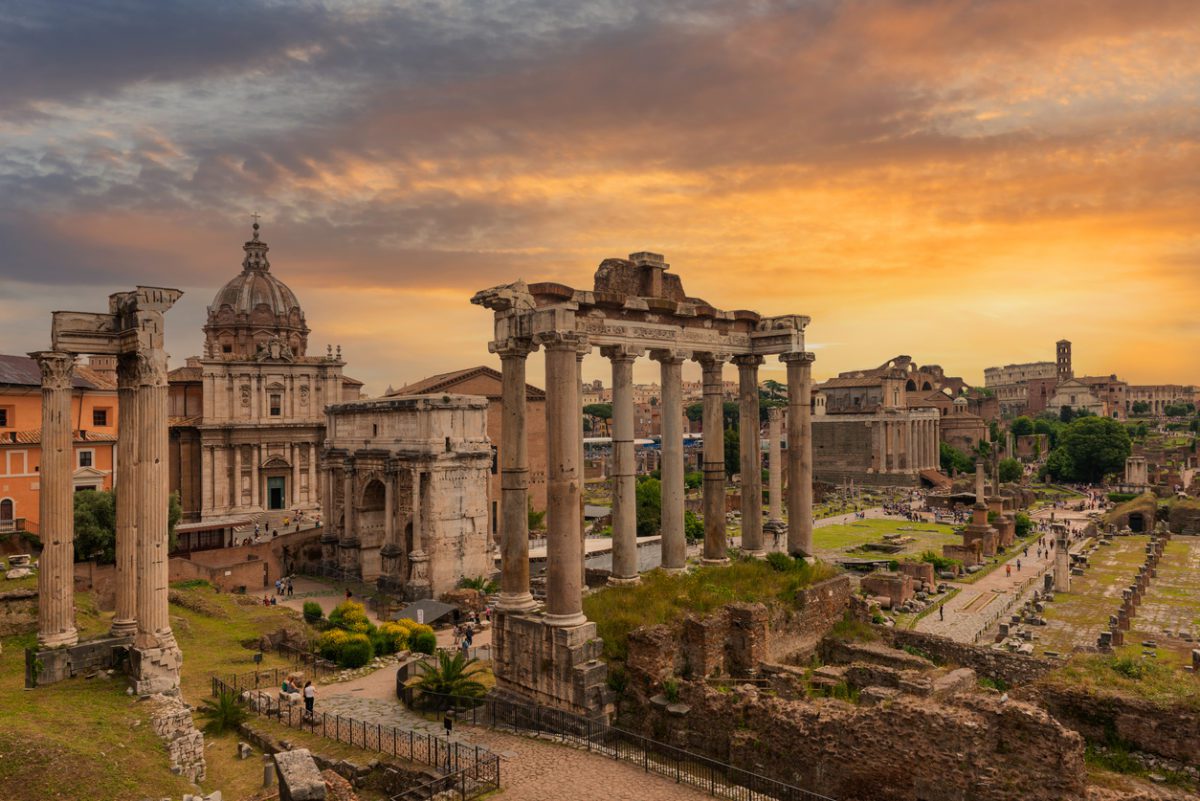
Since 2006, GoEco has offered affordable volunteer abroad programs and internships in over 45 countries throughout Africa , Asia , Australasia , Central America , Europe , the Middle East , North America and South America . With more than 170 different programs, GoEco is a great organization to check out if you’re looking for a variety of impactful volunteer abroad trips to choose from, from wildlife conservation to teaching English . GoEco was recently recognized as the Top Volunteer Abroad Organization from GoAbroad, Top Eco-Enthusiast by Greenmatch, and has been recommended by Buzzfeed, Huffington Post, the United Nations Convention to Combat Desertification and more. As a volunteer, you will have 24-hour support from the GoEco team, from start to finish.
Top destinations include South Africa , Australia , Bali , Costa Rica , Thailand , and Zimbabwe . Top activities include wildlife and animal conservation , marine and coral reef conservation , medical and healthcare , community aid and development , teaching English , and volunteering with children .
Volunteer in Italy – Archeological Excavation
Based in the village of Allumiere in Italy, GoEco offers the opportunity to volunteer to support archaeological digs of Ancient Roman and Estruscan excavation sites. As a volunteer, you can play a direct role in helping to preserve the ancient history of the area for generations to come, while having the experience of a lifetime! As a volunteer you will work with a team of professional archaeologists on a live “minor” excavation site. This program is suitable for students of archeology or anyone with an interest in historical and cultural preservation. You’ll join classes about Italian history, learn how to preserve and restore archaeological finds, and on the weekends, go on excursions with a focus on historical heritage. Learn more about the program here !
Projects Abroad
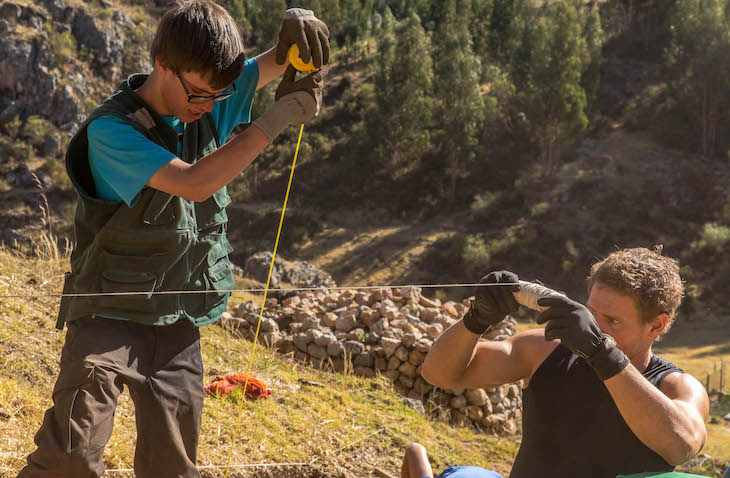
Projects Abroad offers quality volunteer programs, and has placed more than 120,000 travelers worldwide to date. Founded more than 20 years as a small company started by students who wanted a break from school to travel and work in Eastern Europe, Projects Abroad has expanded to include offices around the world with more than 600 trained staff members. It is considered one of the world’s leading international volunteer organizations, with its mission of cultural exchange and freedom of choice.
Discover the secrets of ancient civilizations on one of Projects Abroad’s archaeology projects . You’ll work closely with experienced archaeologists, gaining practical experience on dig sites. These projects are an ideal way to boost your resume, particularly if you’re looking to go into a career in archaeology, or do something completely different.
You’ll also help preserve the country’s heritage and uncover clues that teach more about human behavior. For these projects, Projects Abroad has partnered with understaffed museums who need your help to excavate and restore artifacts. Your work will help ensure the stories of people who came before are not lost to history.
Work on an Inca and Mayan Dig Site in Peru
Discover the fascinating history of South America on Projects Abroad’s Archaeology Project in Peru . You’ll collaborate with archaeologists and historians from the Peruvian Ministry of Culture. As a volunteer, you’ll get your hands dirty on dig sites around the UNESCO Heritage Site, Cusco. All your work will help preserve Mayan culture and history. These are some of the tasks you’ll do:
- Measure out sites and help with excavations
- Uncover ancient structures and help with maintaining them
- Clean and restore artifacts
- Attend workshops about Peruvian history to deepen your knowledge
- Raise awareness about the importance of preserving cultural heritage
You’ll stay with a host family, and start dates are flexible. No experience is necessary. This placement lasts two weeks or more. Read more and sign up here .
Global Vision International
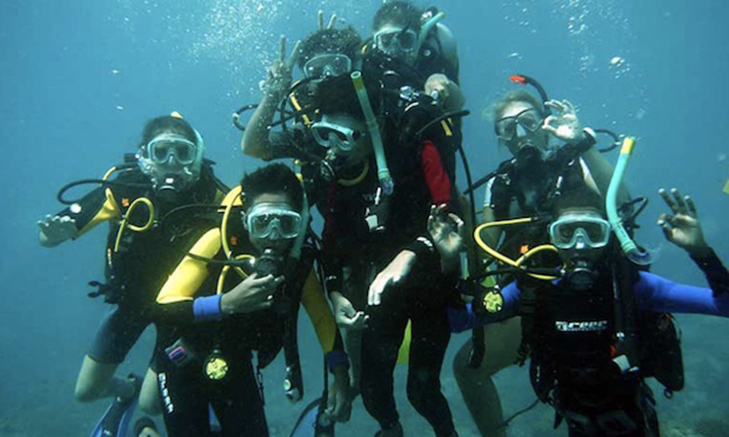
Global Vision International (GVI) offers volunteer trips and internship opportunities in Africa, Asia, Australasia, Europe, and the Americas. Founded in 1997, GVI places 2,000 participants abroad every year, with more than 20,000 travelers placed to date. Projects range from critical community development, environmental conservation, teaching, and more. GVI also provides interns with outstanding opportunities to develop professional skills through training, qualifications, and work placements. GVI partners with prolific organizations such as Save the Children, The Red Cross, WWF, SANParks, and The Jane Goodall Institute, as well as smaller, community-based organizations with grassroots initiatives.
If you’re thinking archaeology is all about digging in the dirt, think again. Many archaeologists are venturing underwater, investigating prehistoric and historic sites and features, including shipwrecks and sunken cities! If you’d like to consider an archaeology adventure that takes you beneath the sea, take a look at a GVI scuba diving program. Archaeologists are scientists who use the theories and methods of all other fields of study because they want to know how people react with and within their environment. When you focus on a placement that includes marine conservation, you’ll understand how archaeological sites are preserved differently underwater, and how they require different research skills and excavation techniques. If you’re interested in archaeology minus the digging, this may be the experience you’ve been looking for.
Marine Conservation & PADI Advanced Open Water Course
Discover the underwater world and develop your skills as a PADI scuba diver on this GVI placement in the Yucatan Peninsula of Mexico. This program is designed for students under 18 who already know how to dive and are seeking PADI Advanced Open Water certification. If you’re interested in learning how to dive, check out the marine conservation awareness program here .
Since you’ll be learning from scuba diving experts, you’ll learn more about marine conservation and experience some of the best diving conditions the world has to offer. After participating in this program, you’ll be a confident diver, which allows you to research safely. Your data will contribute to the long-term survival of the reef while becoming educated about local and global issues. There are many shipwrecks in the Yucatan, mostly Naval vessels that were deliberately sunk and turned into artificial reefs, such as MUSA (Museo Subacuático de Arte), an underwater art project/museum in the waters surrounding Cancun.
You’ll also have a chance to swim with turtles and dolphins while you work to raise environmental awareness and help to minimize the impact. On the weekends, turn your archaeological eye inland and explore ancient Mayan cities and ruins, trek tropical jungles, and may even visit a cenote, an underground river. This placement lasts two weeks with a fee of $3,590. Learn more here!
Ready to Travel?
Travelers love places, but the truth is, they love people more because people make the places you visit special. With a bit of ingenuity, you can create an internship of your own when you mix archaeology fieldwork and community outreach on a placement abroad.
If you have an interest in conservation, preservation, research, or excavation, chances are you can find an opportunity with a volunteer travel company that allows you to explore ancient ruins and do good at the same time. Choose from one that has a specific archaeology project, or talk with your adviser at university to design your own (and earn academic credit in the process). Create your own archaeological field school: pull out your atlas today and start imagining your archaeological adventure abroad!
Most Popular Guidebooks
2024 best volunteer abroad programs, organizations, & projects, medical volunteer abroad programs for doctors, nurses, pre med students, cheap affordable volunteer abroad programs & low cost overseas projects, teens & high school volunteer abroad programs | under 18 mission trips, 200 volunteer abroad & study abroad scholarships & grants, dental volunteer abroad & medical mission trips | dentists & students, volunteer abroad opportunities for seniors and retirees, nursing volunteer abroad projects for students & professional nurses, short term volunteer abroad programs & mission trips (1 week & 2 weeks), long term volunteer work abroad programs & voluntary charity jobs, trending guidebooks, volunteering abroad after the coronavirus outbreak, 2024 best internships abroad: medical care, marine biology & more, volunteer in australia: animals, conservation, ranching and more, 2024 best volunteer abroad programs, organizations, & projects.
Robin Van Auken · Writer
Robin is a researcher, writer, and a registered professional archaeologist, a skillset she uses every day as a cultural communication specialist with Hands-on Heritage . Her projects connect communities with an emphasis on interpretation and education and conserve cultural and environmental legacies.
- Follow Robin Van Auken:
Related guidebooks
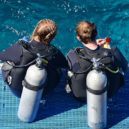
PADI Open Water Certifications & Internships for Divers & Divemasters

2024 Best Internships Abroad: Medical Care, Marine Biology & More

Career Break: Professional Internships for Young and Mid-Career Travelers

Gap Year Travel Abroad Programs, Projects, Internships, and Experiences

Traveller type
- Solo Travelers
- First Time Travelers
- Female Travelers
- Senior Citizens
- Family & Group
- Teen & High School
- Volunteer Abroad
- Intern Abroad
- Teach Abroad
- Study Abroad
- Professional Development
To stay in touch! Enter your email address to get travel recommendations and be the first to know about our $500-$1,000 travel scholarships!
Thanks for signing up!
Your first email will arrive shortly
Matador Original Series

Archaeological Digs Around the World You Can Actually Partake in This Year
W hether you want to excavate ancient temples or skeletons of extinct critters like dinosaurs and mammoths, archaeological and paleontological digs all over the world are looking for volunteers to lend a hand.
In exchange for tuition and sweat, participants receive hands-on instruction, room and board, and the deep gratification of contributing to important scientific discoveries. Most excavations are strenuous, dirty, and physically challenging, involving walking, squatting, and sometimes tolerating rugged accommodations without electricity, but they attract many passionate people of all ages — not just college kids earning credits.
Generally taking place in summer with a spring application deadline, projects take place in almost every nation accessible to researchers. Here are seven excavation opportunities that are actively seeking adult volunteers for 2022.
1. Biblical archaeology in Jordan
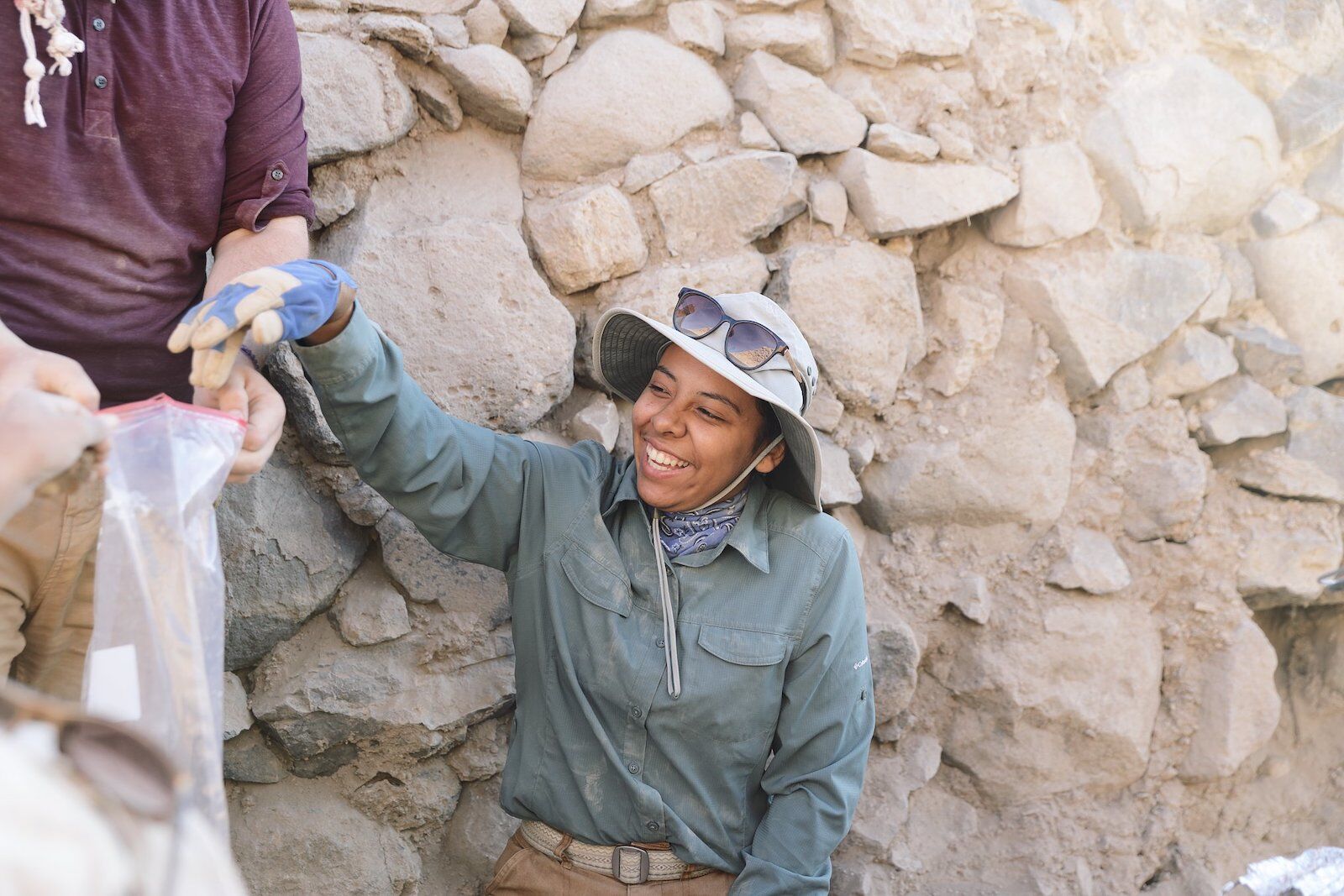
Photo: Balu’a Regional Archaeology Project /Facebook
The site: Khirbat a-Balu’a
Located in north-central Jordan, Khirbat a-Balu’a extends more than 12 miles, and served for millennia as a waystation on the path to the Karak Plateau. The site has been occupied from the Early Iron Age, about 3,000 years ago, through today.
The finds: Among other artifacts, crews have excavated fortification structures and rare iron objects.
The details: The 2022 project runs from June 23 to August 4, with two half-sessions available. There is a minimum stay of three weeks. The price to participate in this archeological dig range from $1500 to $2500, depending on the length of stay and registration fees. College credit is available through La Sierra University.
Contact: Dr. Monique Roddy is reachable via email at [email protected]. Check out the Balu’a Regional Archaeological Project website if you’re keen to participate.
2. Archeological dig at an early settlement in Central Portugal
The site: The esteemed nonprofit Earthwatch Institute sponsors field school for adults interested in understanding the unsolved mysteries of prehistoric Portugal. The transition from pre-agricultural society to herding and farming is the primary focus of the Tagus Valley research. Participants in the 2022 fieldwork will excavate human remains, tools, and other indicators of the transition from hunting and gathering to longer-term settlement.
The finds: The main questions the head archaeologists are asking include how, when, and why Mesolithic and Neolithic peoples occupied the area, which happens to be one of the hottest debates in contemporary European archaeology. Field school participants will excavate shell mounds, analyze artifacts, and conduct lab work.
Details: Eight field sessions run for either one week or two between August 1, 2022 to late September 2022. Participants will stay in the nearby Palace of Muge Estate and couples’ rooms are available. Farm-fresh meals come from local restaurants that can accommodate special diets. Evening lectures are included, and 14-day sessions usually allocate a day or two for recreation. A one-week session is $2,850, and a two-week session costs $3995.
Contact: Dr. Nuno Bicho of the Universidade do Algarve is the project’s lead scientist. Contact Earthwatch for more information to apply.
3. A Mayan city in Belize

Photo: Maya Research Program /Facebook
The site: Blue Creek, Belize
The Maya Research Program is a non-profit affiliate of the University of Texas at Tyler. It’s legit, certified by the Register of Professional Archaeologists. The project’s overarching goal is to understand more about the societies of the Americas, and to educate interested people about the ethics and procedures of archaeology. The Blue Creek site is about 20 miles east of the Guatemalan border.
The finds: Over the years, the project has excavated a portion of an ancient Mayan city. Among many other finds, this has included artifacts that indicate pre-Hispanic trade; residential, religious, and civic buildings; pottery; lithics (archaeology jargon for “stone tools”); jade; jewelry; irrigation systems; and sacred objects.
The details: There are three two-week field sessions in 2022, running from June 6 through mid-July. UT also offers four laboratory classes in the field on topics like archaeological artifact analysis and 3D mapping. Non-student volunteers pay $1,850 for a two-week field session; students enrolled in accredited college courses get a break and only pay $1,600. Participants are housed in a two-story building with a kitchen, or nearby cabanas without electricity. Meals and water are included, and laundry is available for a small fee. Evening lectures cover topics like conservation, mapping, and the sad history of looting Mayan remains.
Contact: For more information, check out the project’s website or email [email protected].
4. Pre-Inca military interactions in Peru

Photo: Institute for Field Research
The site: Pan de Azúcar de Nepeña, Peru
This Institute for Field Research sponsored field school in coastal Peru teaches university students and the general public (18 years old and older) to excavate and analyze 1,000-year-old Peruvian remains like ceramics, textiles, and skeletons. The field school’s research agenda is to understand how the coastal Casma people reacted to the nearby warrior Chimú culture, and how resistance facilitated the Casma’s persistence. Students will learn both excavation and laboratory analysis skills, as well as attend lectures and go on field trips.
Finds: So far archaeologists at the field school site have located a fortified adobe platform, 13 nearby mounds, and a cemetery.
Details: The field school offers two sessions in 2022: June 4 to July 2 and July 2 to July 30. The cost is $3,870 for a full four-week program’s worth of instruction, room and board, local transportation, health and evacuation insurance, and a field trip to the coastal site of Chan Chan. Participants stay in a fully furnished field house in the nearby town of Nepeña. As with many field schools and immersive experiences, proof of full COVID-19 vaccination is required of all participants.
Contact: Check out the website for the Nepeña field school if you are interested in partaking.
5. Roman archaeology in the Austrian Alps
The site: The Roman site of Municipum Claudium Aguntum is situated in Austria not far from Leinz in the Eastern Alps. Geographically and socially, the site stands as a threshold between the Romans of two distinct regions. The peak occupation of the site lasted from about the time of Christ to 500 AD.
The finds: Participants can expect to excavate large structures as well as smaller material culture, and will have the opportunity to analyze some in a laboratory setting. Complementary coursework will be available to students who seek even more enrichment.
Details: The 2022 summer program is likely to be capped at 10 students. It runs from July 25 to August 19, 2022. Participants must be 18 or older and content is delivered in English. The cost is around $2000, not including housing which is another 350.
Contact: For more information, contact Martin Auer of the University of Innsbruck at [email protected]
6. Prehistory of the US Southwest in Gallina, New Mexico
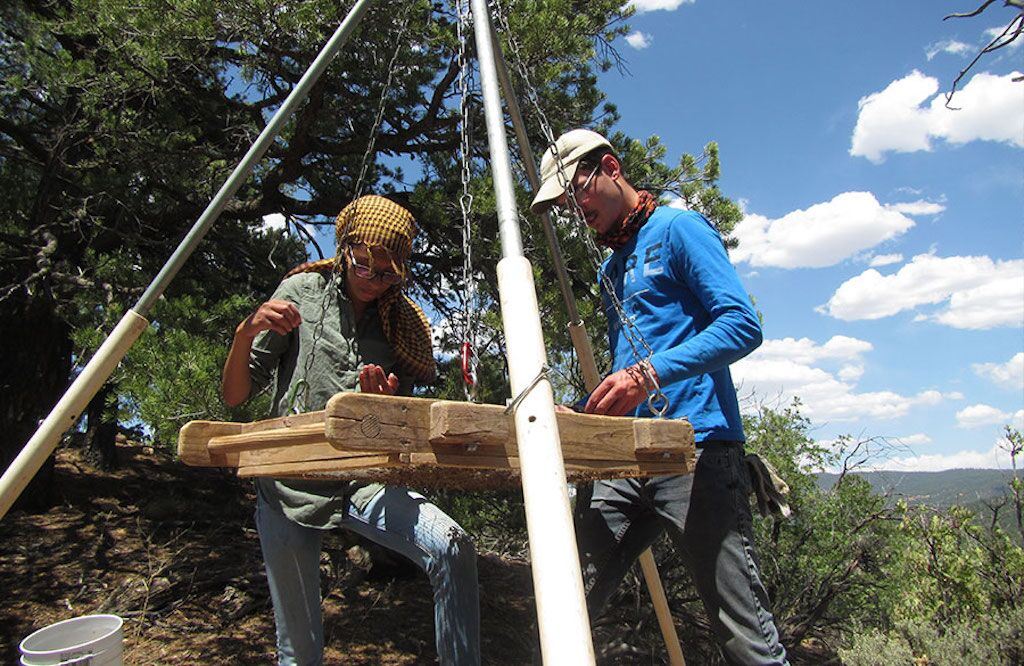
Photo: Institute for Field Research /Shutterstock
The site: About 9000 years ago, the indigenous people of the United States desert began to interact with other cultures and new technologies, foods, and structures. The area grew somewhat violent as peoples fought for scarce resources. Desert archaeology preserves remarkably well, so archaeologists can piece together events that wetter parts of the world can obfuscate. Students at this field school will work to better understand the Gallina peoples of New Mexico – ancient rebels who for 200 years between 1100 and 1300 CE actively resisted elite encroachment on their landscape.
The finds: At the Gallina site, students will find, analyze, and interpret ancient structures, tools, ceramics, and more. One aspect of this field school that sets it apart is that participants will engage in community outreach and preservation of the Gallina’s lifeway. As with many of the other field school experiences, all participants must be fully vaccinated against COVID-19.
Details: The field school runs from May 18 to June 22, 2022. Cost is $4160. Students will also take field trips to important nearby sites like Chaco as well as lectures, storytelling, and other educational components. Camp housing is near the site and food is enjoyed communally.
Contact: Dr. Lewis Borck of the University of Missouri heads up the school. He can be reached at [email protected]. Check out the website to learn more about the program.
7. Presidential estate in Montpelier, Virginia
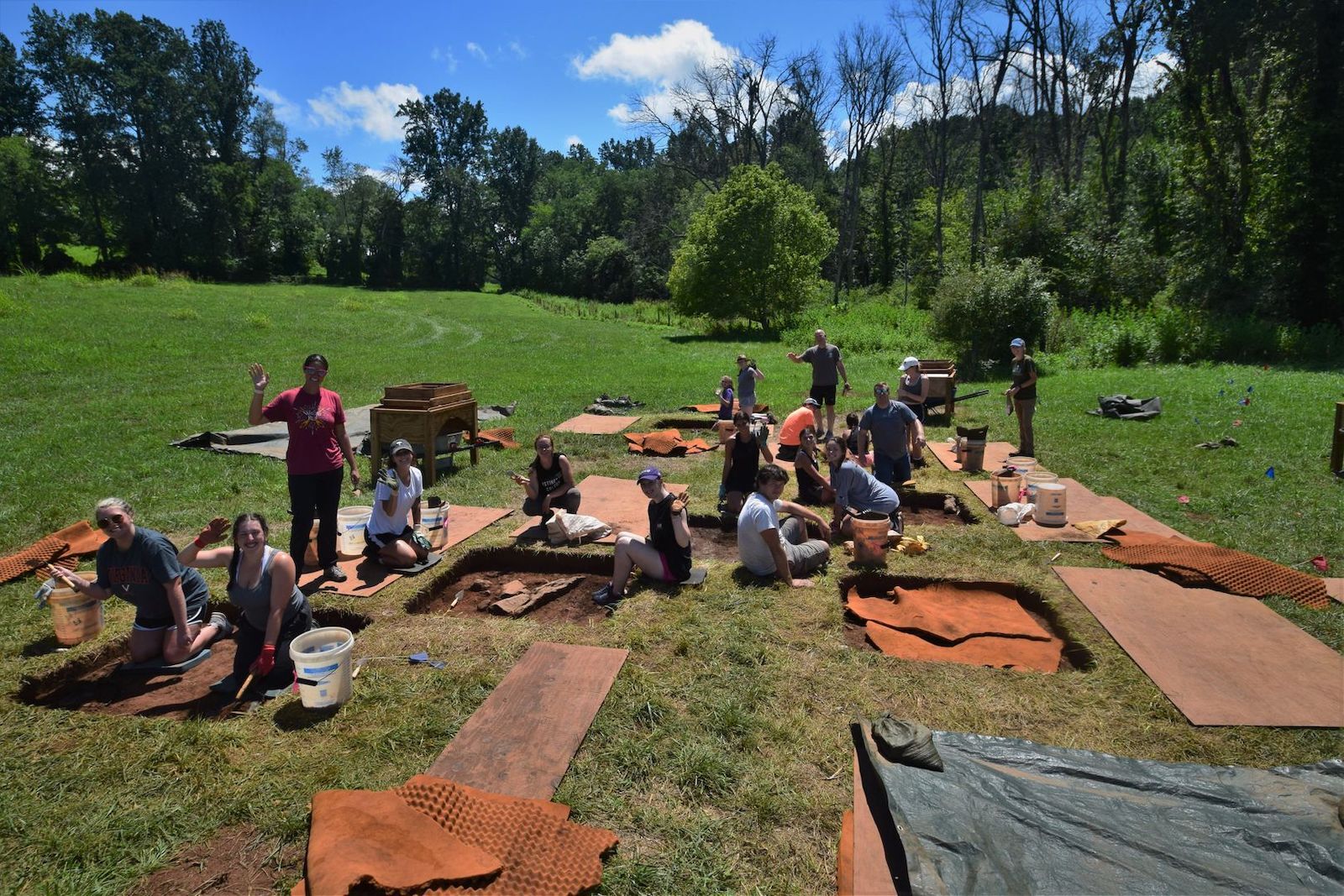
Photo: James Madison’s Montpellier /Facebook
The site: The Montpelier Foundation manages US President James Monroe’s Virginia estate. One of the most important aspects of the archaeology of Montpelier is the reconstruction of the daily lives of the many enslaved people who labored there.
The finds: Much of the mansion and its grounds are intact but archaeologists keep finding more artifacts that round out the story of events that occurred there. Participants will find everything from ceramics to foundations of wooden structures. Most of the artifacts and features (which are immobile artifacts) date back to the 1700s and 1800s with some being more contemporary.
Details: There are four available types of field programs through the Montpelier Foundation. They are excavation, surveying or “finding” sites and artifacts, lab analysis, and historic structure reconstruction. Sessions take place almost year-round. The first session is in March 2022. There are special sessions for high school students and even children, and the foundation offers some thematic sessions like “Wine and Archaeology” throughout the year. Excavation programs last a week and cost $850 and include some meals and souvenirs. Shorter programs cost about $500. None of the programs include lodging.
Contact: Email [email protected] for more information and visit the project’s website .
8. Biblical archeology in Israel
The site: Israel’s Jezreel Valley is full of sites, many from biblical times. The Jezreel Valley Regional Project runs excavations throughout the valley, and allows volunteers and students to participate in several aspects of the endeavor. In most years, the JVRP has four excavations and one survey project to find more sites. Some of the sites are cities, like Tell Abu Shusha where King Herod based his armed forces. Others, like Legio, which is the focus of 2022’s field season, are 2000-year-old Roman legion bases.
The finds: Past students and volunteers have found objects dating back to ancient times, depending on the specific site they excavated. Some objects were used for ritual, others were household material culture and weapons of war.
Details: The dates for the Legio field program are May 13 to June 2, 2022. Scholarships are available.
A version of this article was previously published on January 3, 2019, and was updated on January 5, 2022.
More like this
Trending now, everything you need to know about going wild camping — legally, the 10 best nudist resorts around the world, 21 zion national park cabins to make your desert dreams come true, 17 of the coolest airbnbs near disney world, orlando, the 20 best airbnbs near universal studios orlando, discover matador, adventure travel, train travel, national parks, beaches and islands, ski and snow.

- Renew Membership
- Manage Profile
- Access Journals
- Join SAA Interest Groups
- e-Communities
- Online Learning Archive
- Mission & Goals
- SAA Statements & Guidelines
- Committees and Task Forces
- Interest Groups
- Board of Directors
- Society Bylaws
- Council of Allied Societies
- Advertising Opportunities
- SAA Archive
- Contact SAA Staff
- SAA Media Contact
- The SAA Press
- Career Center
About Archaeology
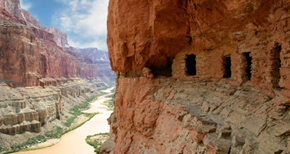
Archaeology Tourism
What is archaeological or heritage tourism? Heritage sites are places of archaeological or historical significance that have been preserved. Many are open to the public for visitation. They often include museums or interpretive centers with exhibits, trails with informational signs or brochures, and staff who provide interpretative tours. "Heritage Tourism" encompasses the sites themselves, as well as ideas and methods for managing, promoting, and interpreting the sites. There is ongoing discussion in Heritage Tourism about concerns with continued protection of the sites and public access to them.
Visit Archaeology
Planning a trip to visit archaeological sites? These resources can help:
- Archaeology Travel Guides : National Park Service
- What We Manage : Bureau of Land Management
- Washington Underground: Archaeology in Downtown Washington, DC : The Center for Heritage Resource Studies at the University of Maryland
- The Ancient Ohio Trail : The University of Cincinnati and the Ohio State University at Newark
- AIA Tour Programs : Archaeological Institute of America
Site Etiquette
Many archaeological sites are unintentionally damaged by visitors who come to enjoy and learn from them. Following these site etiquette guidelines will help reduce damage to fragile sites and will help to save the past for the future. This includes information on what to do if you find an artifact at a public site. There are also graphical versions of guidelines available for sharing online.
- All of the things you see at a site are evidence of the lives of people who once lived there, so it is important that you do not move or disturb anything from the site.
- If you find an artifact, you can examine it, draw it, or photograph it, but it is very important that you leave it where you found it. It is useful to record as much information as possible about the location and the description of the artifact.
- Be careful not to step on artifacts or other features at archaeological sites (structures, mounds, ancient trash pits) unless there is the proper infrastructure (for example, boardwalks) in place that will prevent you from damaging these ancient features.
- Don’t lean, sit, stand, or climb on prehistoric walls.
- Staying on established paths or trails will help control erosion and preserve the site.
- Modern trash can contaminate the soil of an archaeological site so be sure not to toss an apple core, banana peel, or cigarette. Food can attract animals, which can be very destructive to sites.
- Place your campsite away from archaeological sites. Campfires produce charcoal that can alter radiocarbon dates of an archaeological site, and food attracts animals that may dig, nest, or burrow on the site.
- Pets can be very destructive to archaeological sites—leave your pooch behind when you are visiting a site.
- Share the information with a professional archaeologist. If you are visiting a state or national park, inform a park ranger, naturalist, or interpreter. Each state has a Historic Preservation Office that records the location of archaeological sites.
These guidelines were adapted from those developed by the U.S. Forest Service.
- Interactive Digs
- Subscribe to the Digital Edition!
- Archaeology e-Update
- Subscriber Alert!
- Archaeology.org Survey Rules

A publication of the Archaeological Institute of America

Concerned by the threat posed to ancient sites by increasing traffic and inadequate or under-funded site management plans, the AIA and ARCHAEOLOGY have joined with the Adventure Travel Trade Association in creating a guide to good practices for archaeological tourism. "The guide will be an important resource for tour operators who wish to incorporate archaeological sites into their tour packages while ensuring that these sites are protected from damage so that they may be enjoyed for generations to come. The guide will also provide useful do's and don'ts for tourists themselves," says AIA CEO Teresa Keller. Completion and publication of the guidelines is expected by this October.
Archaeological sites and historic places are major tourist attractions worldwide. In the last few years, visits to historical sites have ranked third--after dining in restaurants and shopping--among activities undertaken by Americans traveling abroad. The number of people that visit archaeological sites rises every year and the increase in traffic can result in damage to sites. In extreme cases, sites have been closed to the public to prevent further damage.
The popularity of archaeological sites as tourist attractions means that they are valuable sources of revenue, but unfortunately this is often not matched by reinvestment in proper management to ensure both protection of the site and continued enjoyment of it by tourists. Archaeological sites are fragile resources and inadequate site management will result in deterioration or even destruction of the site and its related social, historical, educational, and economic potential.
With these concerns in mind the Archaeological Institute of America (AIA), ARCHAEOLOGY magazine, and the Adventure Travel Trade Association (ATTA) are creating a manual of good practices for tour operators and the tourists who visit archaeological sites. When complete, the guide will outline practices that will allow for proper, sustainable archaeological tourism, giving visitors the opportunity to fully experience ancient sites while minimizing the negative impact of tourism. The guide will be an important resource both for tour operators who wish to incorporate archaeological sites in their tour packages and for tourists who want to see these sites first hand. In conjunction with adequate and properly funded site management plans, these guidelines will help ensure that the public can enjoy the experience of visiting ancient places for generations to come.
Who are the AIA, ATTA, and ARCHAEOLOGY?
The Archaeological Institute of America is North America's oldest and largest archaeological organization. It was chartered in 1906 by Congress in recognition of its work in developing the Antiquities Act, a cornerstone in the preservation of archaeological sites in the U.S. Today, the Institute has nearly 250,000 members and subscribers in more than 100 local societies. It promotes an informed public interest in the cultures and civilizations of the past, supports archaeological research, fosters the sound professional practice of archaeology and advocates the preservation of the world's archaeological heritage.
The AIA's award-winning magazine ARCHAEOLOGY , now in its 60th year of publication, brings the excitement of archaeological discovery to an audience of more than 730,000 readers worldwide. Our readers are a diverse group who thrive on varied cultural and artistic experiences, including travel to exotic locations.
The AIA and ARCHAEOLOGY websites reach a combined annual audience of nearly 2.4 million visitors with almost 7.4 million page views.
The Adventure Travel Trade Association is a membership organization for companies in the adventure travel area. While seeking to promote and grow the adventure travel market, ATTA is working to provide a unifying voice for the industry that promotes and facilitates knowledge sharing and a common vision; defines "adventure travel" and establishes "best practices" and operating standards; and encourages sustainable and environmentally and culturally sensitive adventure travel practices.
Advertisement

- Writers' Guidelines
- Privacy Policy


Curiosity encouraged on an archaeology dig
Uncover the secrets of civilizations lost to time, make your next vacation, the experience of a lifetime.
If you’ve ever been captivated by discoveries of civilizations long buried, step into the world of an active archaeological dig with Ancient Odysseys. Infinitely rewarding and exciting, each of the excavations featured here will provide the opportunity for you to work and train alongside archaeologists out in the field. With your help, archaeologists will unearth features and artifacts and unravel mysteries of past societies and peoples.

There's no time like the present to unearth the past
Find an excavation that unleashes your inner Indiana Jones today.
Check back regularly as new archaeological excavations are always being added. In the meantime, find out what you can expect on a dig .
Take advantage of the search to browse through the World Heritage Centre information.
Share on social media
Unesco social media, archaeological site of troy.
- Description
Troy, with its 4,000 years of history, is one of the most famous archaeological sites in the world. The first excavations at the site were undertaken by the famous archaeologist Heinrich Schliemann in 1870. In scientific terms, its extensive remains are the most significant demonstration of the first contact between the civilizations of Anatolia and the Mediterranean world. Moreover, the siege of Troy by Spartan and Achaean warriors from Greece in the 13th or 12th century B.C., immortalized by Homer in the Iliad, has inspired great creative artists throughout the world ever since.
Description is available under license CC-BY-SA IGO 3.0
Site archéologique de Troie
Troie, chargée d'une histoire de 4 000 ans, figure parmi les sites archéologiques les plus connus du monde. Les premières fouilles dans ce site datent de 1871 et furent effectuées par le grand archéologue Heinrich Schliemann. En termes scientifiques, ses nombreux vestiges offrent la preuve la plus significative du premier contact entre les civilisations de l'Anatolie et du monde méditerranéen. En outre, le siège de Troie par les guerriers grecs de Sparte et d'Achaïe au XIII e ou au XII e siècle av. J.-C., immortalisé par Homère dans l'Iliade , a inspiré depuis lors les grands artistes du monde entier.
موقع طروادة الأثري
تبرز طروادة المثقلة بتاريخ دام 4000 سنة بين المواقع الأثرية الأشهر في العالم. وتعود أعمال التنقيب الاولى التي تناولت هذا المكان الى عام1781 وقد تولاها عالم الآثار الكبير هنريخ شليمان. وتشكل آثارها المتعددة دليلاً بالغ الأهمية على الاتصال الأول بين حضارة الأناضول وحضارة العالم المتوسطي. الى ذلك، شكل حصار طروادة الذي شنه محاربو اسبارطة وأكاي اليونانيون في القرن الثالث عشر أو الثاني عشر قبل الميلاد والذي خلّده هوميروس في إلياذته مصدر ايحاء لكبار الفنانين في العالم أجمع.
source: UNESCO/CPE Description is available under license CC-BY-SA IGO 3.0
特洛伊以其4000多年的历史成为世界上最著名的考古遗址之一。1870年,著名的考古学家海因里希·谢里曼(Heinrich Schliemann) 对这个遗址进行了第一次挖掘。从科学的角度来说,它大量的遗存物是安纳托利亚和地中海文明之间联系的最重要最实质的证明。特洛伊于公元前13世纪或12世纪遭到来自希腊的斯巴达人和亚加亚人的围攻,这一史实由荷马写进史诗而流传千古,而且从那时起它便启发了世界上众多艺术家的创作灵感。
Sitio arqueológico de Troya
El sitio arqueológico de Troya, con sus 4.000 años de historia, es uno de los más célebres del mundo. Las primeras excavaciones del sitio datan del año 1870 y fueron realizadas por el famoso arqueólogo Heinrich Schliemann. Desde un punto de vista científico, sus numerosos vestigios constituyen la prueba más importante del primer contacto entre las civilizaciones de Anatolia y el mundo mediterráneo. El asedio de Troya por los guerreros espartanos y aqueos, llegados de Grecia hacia el siglo XIII o XII a.C., fue inmortalizado por Homero en La Ilíada y desde entonces ha sido una fuente continua de inspiración para grandes artistas del mundo entero.
source: NFUAJ
Archeologisch gebied van Troje
Troje, met zijn 4000 jaar geschiedenis, is een van de beroemdste archeologische vindplaatsen ter wereld. De eerste opgravingen werden er in 1870 uitgevoerd door de archeoloog Heinrich Schliemann. De overblijfselen zijn het belangrijkste wetenschappelijke bewijs van het eerste contact tussen de beschavingen van Anatolië en de mediterrane wereld. Troje kende in de vroege bronstijd al menselijke bewoning. De belegering van Troje door Spartaanse en Egeïsche krijgers uit Griekenland in de 13e of 12e eeuw voor Christus – door Homerus beschreven in de Ilias – is een grote inspiratie geweest voor kunstenaars overal ter wereld.
Source: unesco.nl
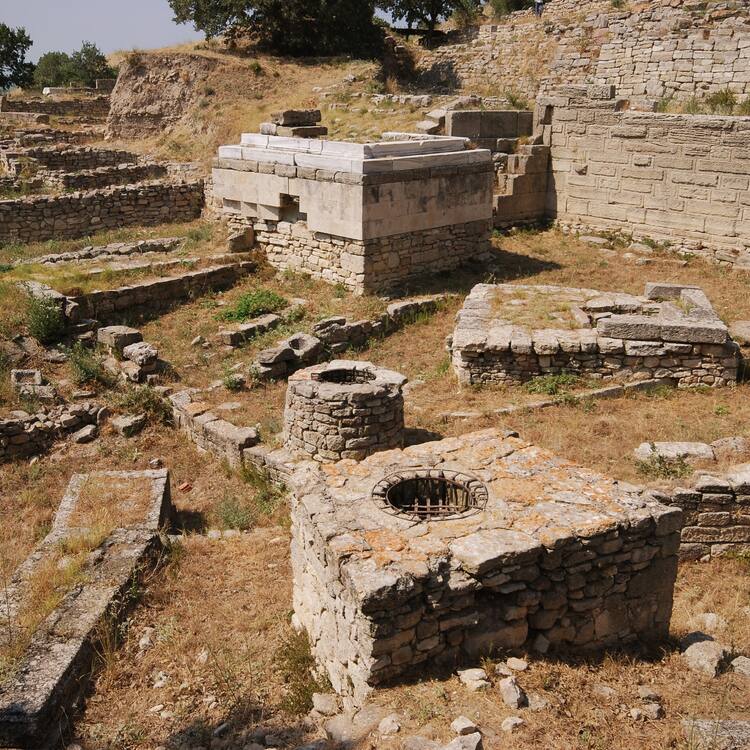
Outstanding Universal Value
Brief synthesis
The Archaeological Site of Troy has 4,000 years of history. Its extensive remains are the most significant and substantial evidence of the first contact between the civilizations of Anatolia and the burgeoning Mediterranean world. Excavations started more than a century ago have established a chronology that is fundamental to the understanding of this seminal period of the Old World and its cultural development. Moreover, the siege of Troy by Mycenaean warriors from Greece in the 13th century B.C., immortalized by Homer in The Iliad , has inspired great artists throughout the world ever since.
Troy is located on the mound of Hisarlık, which overlooks the plain along the Turkish Aegean coast, 4.8 km from the southern entrance to the Dardanelles. The famous archaeologist Heinrich Schliemann undertook the first excavations at the site in 1870, and those excavations could be considered the starting point of modern archaeology and its public recognition. Research and excavations conducted in the Troia and Troas region reveal that the region has been inhabited for 8,000 years. Throughout the centuries, Troy has acted as a cultural bridge between the Troas region and the Balkans, Anatolia, the Aegean and Black Sea regions through migration, occupation, trade and the transmission of knowledge.
24 excavation campaigns, spread over the past 140 years, have revealed many features from all the periods of occupation in the citadel and the lower town. These include 23 sections of the defensive walls around the citadel, eleven gates, a paved stone ramp, and the lower portions of five defensive bastions. Those archaeological remains date for the most part from Troy II and VI; however, a section of the earliest wall (Troy I) survives near the south gate of the first defences. In the last 15 years, it has become clear that a Lower City existed south of the mound in all prehistoric periods and extended to about 30 ha in the Late Bronze Age. Several monuments, including the temple of Athena and the recently excavated sanctuary, are part of the Greek and Roman city of Ilion, at the site of Troy. The Roman urban organization is reflected by two major public buildings on the edge of the agora (central market place), the odeion (concert hall) and the nearby bouleuterion (council house).
The surrounding landscape contains many important archaeological and historical sites, including prehistoric settlements and cemeteries, Hellenistic burial mounds, monumental tumuli, Greek and Roman settlements, Roman and Ottoman bridges and numerous monuments of the Battle of Gallipoli.
Criterion (ii): The archaeological site of Troy is of immense significance in the understanding of the development of European civilization at a critical stage in its early development. It documents an uninterrupted settlement sequence over more than 3,000 years and bears witness to the succession of civilisations. The role of Troy is of particular importance in documenting the relations between Anatolia, the Aegean, and the Balkans, given its location at a point where the three cultures met.
Criterion (iii): The Archaeological Site of Troy bears witness to various civilizations that occupied the area for over 4,000 years. Troy II and Troy VI provide characteristic examples of an ancient oriental city in an Aegean context, with a majestic fortified citadel enclosing palaces and administrative buildings, surrounded by an extensive fortified lower town. Several other monuments and remains reflect the characteristics of Roman and Greek settlements, and other distinct attributes bear witness to the Ottoman settlements.
Criterion (vi): The Archaeological Site of Troy is of exceptional cultural importance because of the profound influence it had on significant literary works such as Homer’s Illiad and Virgil’s Aeneid , and on the arts in general, over more than two millennia.
The inscribed property contains all the necessary elements to express its Outstanding Universal Value. The archaeological remains still allow for an impressive insight into the Bronze Age city with its fortifications, palaces and administrative buildings. Of the Greek and Roman periods, two major public buildings on the edge of the agora have survived in almost complete condition.
Authenticity
The authenticity of the archaeological site is high, since there have been very few reconstructions. Those that have taken place on the defences have been carried out in strict accordance with the principles of anastylosis. The authenticity of the surrounding landscape is also high, and represents an organic development from prehistory to the present century that has not been subject to any obtrusive tourism development.
Protection and management requirements
The 1968 Decree No 3925 of The Superior Council of Immovable Cultural and Natural Property, under the authority of the Ministry of Culture and Tourism, designated the Archaeological Site of Troy as a historic site. The Antique City of Troy was also registered as first-degree archaeological site and a conservation zone was created in 1981 by Decision No 12848 of The Supreme Council of the Immovable Ancient Objects and Monuments. The limits of the Antique City of Troy have been defined by the 1995 decision No 2414 of the Edirne Conservation Council of Cultural and Natural Properties and were made to coincide with those of the World Heritage property. It is thus protected under the provisions of Law No 2863 of the Republic of Turkey on the Conservation of Cultural and Natural Property. Under this legislation, sites and the movable properties discovered on them are State property and no works may be carried out without the authorization of the related Regional Council. With the Cabinet Decree No 8676 of 1996, the antique city of Troy and the surrounding landscape were inscribed as a “National Historical Park”. To date, the majority of archaeologically relevant areas of Troy are owned by the State and thus protected by law. Following the compulsory purchase of a number of holdings in 1994, 75% of the lower town and the cemeteries are now in State ownership and further appropriation measures are currently in progress. The remaining land in private ownership is under cultivation.
The overall responsibility for the protection and conservation of the designated sites rests with the General Directorate of Cultural Heritage and Museums. Collaborating institutions at regional level are the Çanakkale Council for the Preservation of the Cultural Heritage, the Governorship of Çanakkale and the Çanakkale Museum.
The National Parks Department of the Ministry of Forests collaborates with the Ministry of Culture on issues regarding the surrounding landscape. A plan for its preservation was prepared by the Department in 1971, revised in 2010, and constitutes the primary planning document for the management of the property.
- Instagram page
- Twitter page (X)
- The archaeological site of Troy
- Explore Turkey: Troy - Truva
- Troia und die Troas - Archäologie einer Landschaft
- Turkey on the World Heritage List
- Skip to primary navigation
- Skip to main content
- Skip to primary sidebar
- Skip to footer
Green Global Travel
World's largest independently owned Ecotourism / Green Travel / Sustainable Travel / Animal & Wildlife Conservation site. We share transformative Responsible Travel, Sustainable Living & Going Green Tips that make a positive impact.
10 Ancient Archaeological Sites For Your World Travel Bucket List
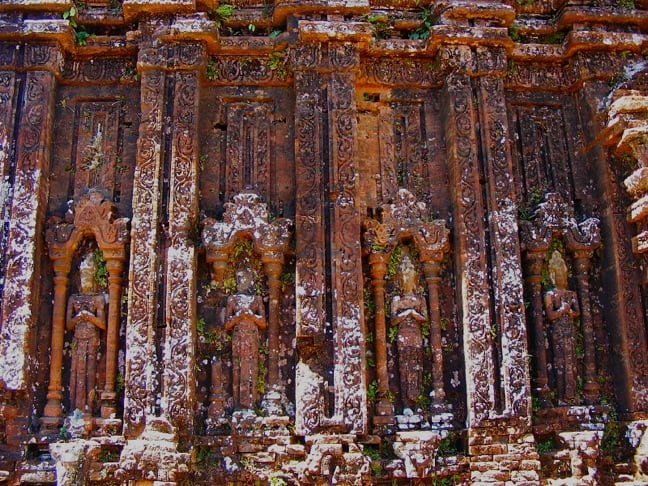
Disclaimer: This post may contain affiliate links. All hosted affiliate links follow our editorial policies .
Typically, when ancient archaeological sites get some form of development, it’s a benefit.
With development comes better controlled access and funds for excavation, preservation, and restoration. But it also means a lot more visitors.
There’s nothing more satisfying than arriving at an ancient treasure to find few, if any other visitors there. But with more and more people traveling each year, it’s becoming harder and harder to find archaeological sites that aren’t crowded with tourists.
For that sort of exclusive experience, you have to go the extra mile. To that end, check out our guide to 10 off-the-beaten-path archaeological sites every history lover should consider adding to their World Travel Bucket List .
READ MORE: How Mass Tourism is Destroying 30+ Destinations Travelers Love
MY SON SANCTUARY (Vietnam)
This UNESCO World Heritage Site has been hammered by looting, vegetation growth, irresponsible visitors and, most tragically, the U.S. Air Force (a 1969 bombing run took a painful toll).
Still, the Charn Dynasty capital (which is located 70 kilometers south of DaNang) was a powerhouse in its day, ruling the vast Champa Kingdom for nearly 800 years.
A Hindu kingdom, the Champa built in a very distinctive architectural style that incorporated influences from China and India.
Seventy temples and numerous other buildings remain today, as do burial chambers for Cham royalty and a number of stele (or stone slabs) inscribed in Sanskrit and Cham.
With help from UNESCO , the governments of Vietnam, Italy, and Japan have worked hard to stabilize and restore the site since 2004. Still, they caution that landmines and unexploded bombs from the war still lie in the jungle just beyond the site.
READ MORE: Saving Endangered Asian Animals (Wildlife Conservation Programs)
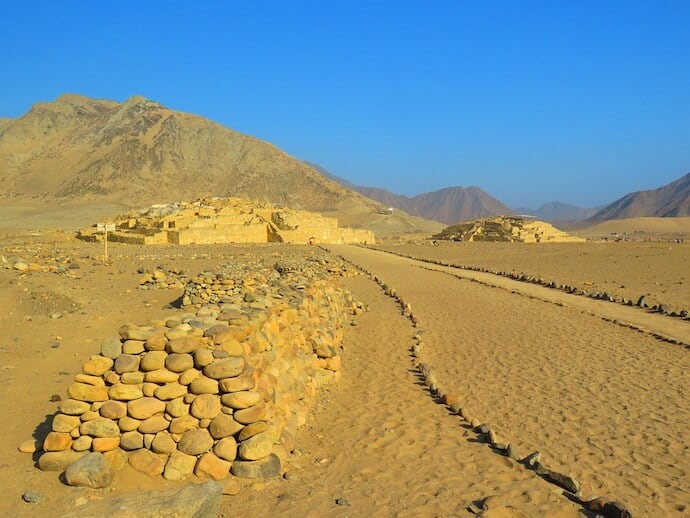
CARAL (Peru)
Around 120 miles north of Lima, in the Supe Valley, lies one of the oldest cities in the Americas.
At the same time Egypt ’s pyramids were built 5000 years ago, the North Chico civilization was building its own pyramids in the coastal deserts of Peru .
Caral, which was “discovered” in 1905, is famous for its large pyramids, sunken amphitheatre, and the mass of flutes (made from condor and pelican bones) and cornets (made from llama bones) that have been uncovered at the 35-square-mile site.
Most interestingly, from an archaeological standpoint, the settlement and architectural patterns at Caral clearly influenced nearly every subsequent civilization birthed along the Pacific coast, including the Inca.
Rarely has an ancient site had such a far-ranging impact.
READ MORE: A Voyage Into the Peruvian Amazon
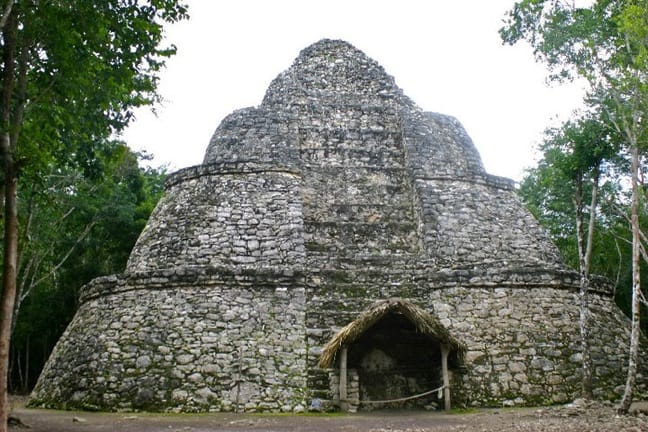
COBÁ (Mexico)
The Mayan civilization at Cobá reaches back at least 2100 years. Sometime between 100BC and 100AD, the first wooden town was constructed at the site, which is located in Mexico’s Yucatan Peninsula.
By 200AD the city dominated the region, controlling ports, trade routes, mines, production facilities and agriculture. Cobá’s influence stretched far into central Mexico , and south into modern-day Guatemala and Honduras.
The city formed military alliances and traded architectural influences with well-known sites such as Tikal, Calakmul and Teotihuacan.
It wasn’t until the dramatic rise of Chichén Itzá that Cobá’s power began to wane. By 1000AD the once-great city had become more of a religious center, with little or no political clout.
Today, its remarkable ruins (which include the 120-step Noloch Mul pyramid) are still being excavated from the jungle, with some experts estimating around 80% are yet to be uncovered.
READ MORE: The 16 Best Mayan Ruins to Explore
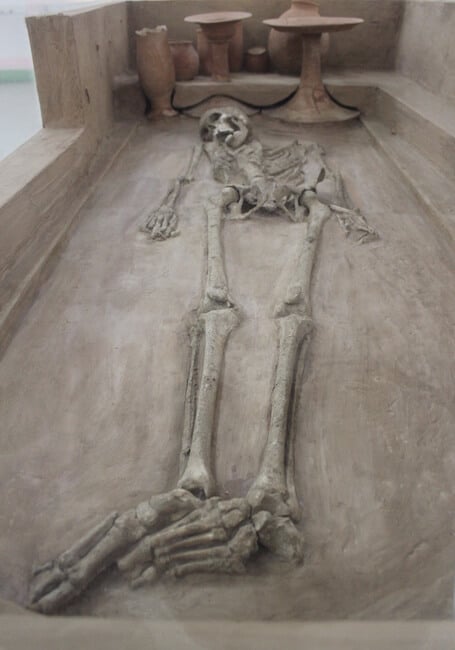
RAKHIGARHI (India)
In the northwest state of Haryana, about 150 kilometers from Delhi, lies the Harappan settlement of Rakhigarhi . While not as well known as major sites at Harappa and Mohenjadaro, Rakhigarhi is 224 hectares, which makes it one of the largest archaeological sites in India.
Recent excavations have uncovered an important urban center dating back 5,000 years, including paved roads, water collection and drainage systems, and brick, metal-working and statue factories. The people who lived here were also highly skilled with jewelry and precious stones.
A 2015 excavation produced four complete human skeletons (two male adults, one female adult, and one child) from mound RGR-7. Around the skeletons, archaeologists found pottery that contained grains of food and shell bangles.
The Global Heritage Fund has declared Rakhigarhi as one of the most endangered ancient archaeological sites in the world.There have been many suggestions in recent years that Rakhigarhi might get UNESCO World Heritage Status, and the much-needed funds that come with it.
But, with a hotel development also planned for the area, Rakhigarhi might not be off the beaten track for much longer.
READ MORE: On the Trail of Tigers in Ranthjambore National Park (India)
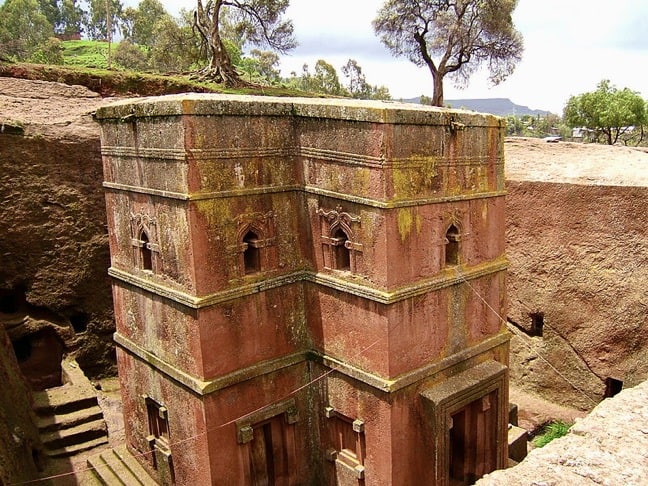
LALIBELA (Ethiopia)
The roots connecting Jerusalem and Ethiopia run deep.
Some 2,000 years ago, the Queen of Sheba went in search of Solomon and ended up in Jerusalem. There, the Jewish king known for his wisdom became the father of her son, Menelik (a.k.a. Ethiopia’s first emperor).
Menelik supposedly took the Ark of the Covenant with him when he returned to Ethiopia.
Fast forward a thousand years, and a newer Christian emperor, Saint Gebre Mesqel Lalibela, set out to create a mystical model of both the heavenly and earthly Jerusalem by carving eleven churches into the rock on the side of a mountain 2,500 meters above sea level.
Now a UNESCO World Heritage Site, Lalibela is also one of the most important sacred sites of the Ethiopian Christian Orthodox religion.
READ MORE: Best Coffee in the World (A Gourmet’s Guide to 30 Varietals)
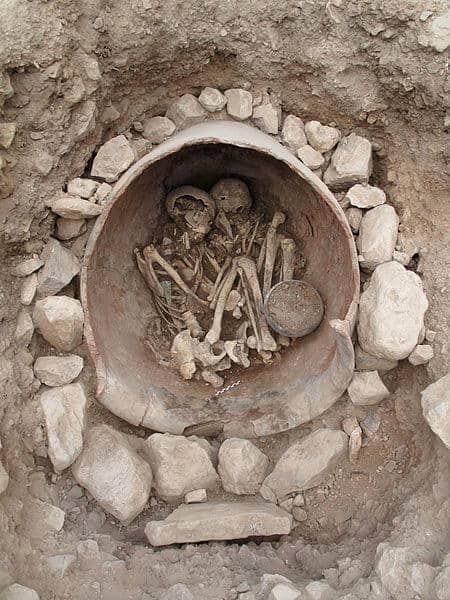
LA BASTIDA (Spain)
Located in Murcia, La Bast ida was perhaps the most powerful Bronze Age city in Europe. Archeological excavations turned up a unique, imposing construction and fortification system matched only by the Minoans of ancient Greece .
The ongoing digs are part of a larger project to create one of the most comprehensive archaeological parks in the world.
Beyond the excavations, La Bastida Archaeological Park will feature a museum, research center, library, and visitor facilities. The park will also allow visitors to view the entire research process, including visits to the laboratories.
Set your appointment to visit the park, which is about 10km southwest of the village of Totana, through the Totana Tourism Office on Plaza de la Constitución.
READ MORE: Ecotourism in Spain: the Top 5 Attractions

BARRILES (Panama)
Located in the mountains of Panama near the Costa Rica border, Barriles was named for several stone barrels found on the site in the late 1920s.
Based on the limited research done at the site, it’s assumed that the 1000+ people of Barriles were divided into upper class, middle class, and lower class.
Around 600 or 700 AD, Barriles boasted a higher population than any other city in the region. It was possibly a ceremonial center, whose activities drew people from the dozens of sites dotting the Chiriquí valley and the slopes of the Talamanca cordillera.
Barriles can be found on the road to Cazán, about 6 kilometers south of Volcán, and is open daily from 8am to 5pm.
READ MORE: The History (and Wildlife) of Coiba National Park (Panama)
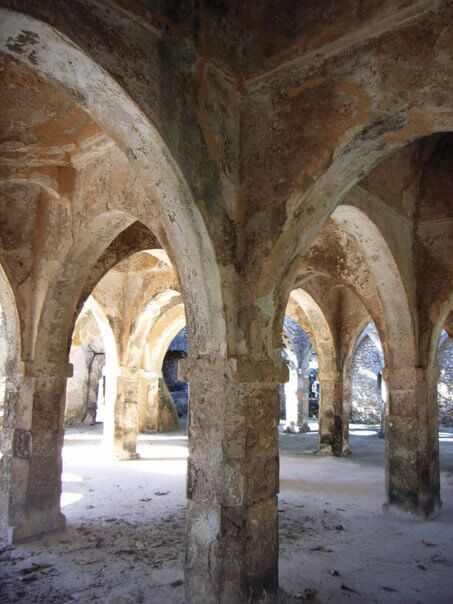
KILWA KISIWANI (Tanzania)
Located on an island off the coast of Tanzania, the trading center of Kilwa Kisiwani was once one of the greatest cities in the world.
Founded around 900AD on an island off the coast of East Africa by Ali bin Al-Hasan, the city grew steadily over 400 years by linking Africa’s southern interior with civilizations in the Indian Ocean and Pacific Rim. Coins from Kilwa have even been found in Australia.
By 1200, Kilwa dominated nearly the entire coast of East Africa . The great Moroccan traveler Ibn Batuta arrived to Kilwa in 1331 and was amazed by the city’s beautiful houses built with coral, its dome-chambered mosque, and its rich sophistication.
The city finally fell to the Portuguese in the late 15 th century. Today, Kilwa is an impressive UNESCO World Heritage Site best accessed from Kilwa Masoko, south of Dar-es-Salaam.
READ MORE: Top 10 Tanzania National Parks (The Ultimate Tanzania Safari)
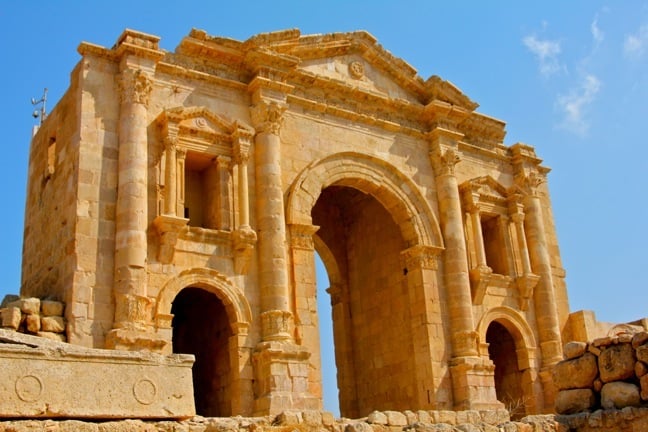
JERASH (Jordan)
Located less than 50 miles from Jordan capitol city, Amman, ancient Gerasa was one of the famous Decapolian cities– the 10 centers where Greco-Roman culture mixed with Semitic and Persian civilization.
The Romans arrived there in 63BC and absorbed the city into the Province of Syria, and later the Province of Arabia. But the Romans also allowed the city considerable self-rule, and it grew quickly in size, significance, and wealth.
It became so important that Emperor Hadrian felt compelled to visit sometime around 130AD, when the triumphal arch was constructed.
Even after the collapse of the Roman empire and a takeover by the Persians in 614AD, the city continued to prosper. It wasn’t until a massive earthquake struck in 749AD that the city was partially abandoned, and quickly lost its regional influence.
Excavation at the site took off in the 1920s. Today, Jerash is perhaps the largest and best-preserved Roman city in the Middle East . Though it’s not nearly as popular a tourist attraction as the City of Petra , it remains a must-see for history buffs.
READ MORE: The Ancient Roman Ruins of Jerash, Jordan
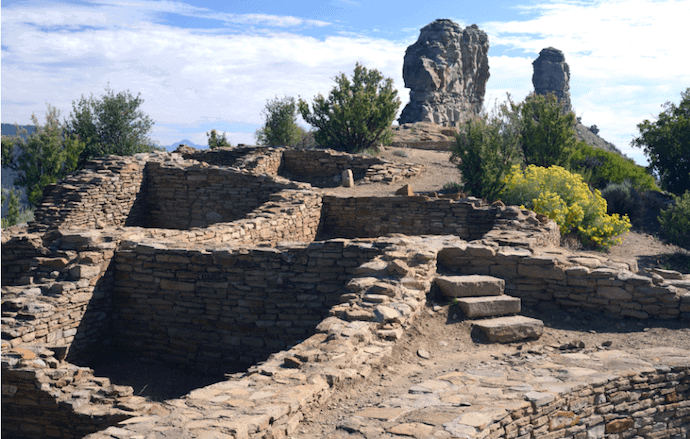
CHIMNEY ROCK NATIONAL MONUMENT (USA)
Chimney Rock is a dramatic, 1000-year-old site in south-central Colorado , located between the towns of Durango and Pagosa Springs.
An important ancestral Puebloan site, Chimney Rock is located hundreds of feet above the valley floor within the San Juan National Forest Archaeological Area. The views are stunning, and the architecture is clearly aligned with the patterns of the sun and moon.
At its height, several thousand people lived there. The Great House, which is of Chacoan design, is of particular interest: The difference between it and the better known Mesa Verde style of architecture is stark, marking a clear cultural distinction.
As such, Chimney Rock marks the northeastern edge of the enigmatic Chaco Culture… as far as we know. The visitor center is open between May 15 and September 30 th , with guided walking tours conducted daily. There are also cool camping areas nearby. – Jim O’Donnell
READ MORE: The Complete List of US National Parks By State (An EPIC Guide)
BIO: Taos-based freelance writer and photographer Jim O’Donnell is a former archaeologist, and a member of our Green Travel Media team. He can be found at his website, Around the World in Eighty Years , and on Facebook and Twitter .
If you enjoyed reading 10 Archaeological Sites for Your World Travel Bucket List , you might also like:
What is an Eco Lodge? A Guide to “Green” Accommodations
How to Choose a Green Hotel
What Is Ecotourism? 10 Simple Steps to More Sustainable Travel
What Is Glamping? (The Top 10 Glamping Resorts in the World)
Exploring the Xunantunich Ruins (Belize)

About the Author
Green Global Travel is the world's #1 independently owned ecotourism website encouraging others to embrace sustainable travel, wildlife conservation, cultural preservation, and going green tips for more sustainable living.
We've been spotlighted in major media outlets such as the BBC, Chicago Tribune, Forbes, The Guardian, Lonely Planet, National Geographic, Travel Channel, Washington Post and others.
Owned by Bret Love (a veteran journalist/photographer) and Mary Gabbett (business manager/videographer), USA Today named us one of the world's Top 5 Travel Blogging Couples. We were also featured in the 2017 National Geographic book, Ultimate Journeys for Two, for which we contributed a chapter on our adventures in Rwanda. Other awards we've won include Best Feature from both the Caribbean Tourism Organization and the Magazine Association of the Southeast.
As Seen On…

Join the 300,000+ people who follow Green Global Travel’s Blog and Social Media
United States Archaeology Cruises
- Start Date Select Month April 2024 May 2024 June 2024 July 2024 August 2024 September 2024 October 2024 November 2024 December 2024 January 2025 February 2025 March 2025 April 2025 May 2025 June 2025 July 2025 August 2025 September 2025 October 2025 November 2025 December 2025 January 2026 February 2026 March 2026 April 2026 OR, More specific start
- Easy Active
- Challenging
- Most Popular
- River Cruises
- Scheduled Group Tour
- Solo Travel
- Wildlife & Safari Exploration
- Adventure Options
- Archaeological Site Visits
- Helicopter Tours
- Land & Sea Exploration
- Local Market Visits
- Rainforest Exploration
- Small Ship Cruises
- Spa Relaxation
- Stand Up Paddle Boarding
- Urban Exploration
- Village Visits
- Whale Watching
- Whitewater Rafting
- Wilderness Lodge Exploration
- Wildlife Viewing
- Wine Tasting
- Admiralty Dream
- Alaskan Dream
- American Constellation
- American Constitution
- American Glory
- American Heritage
- American Independence
- American Jazz
- American Liberty
- American Melody
- American Pride
- American Song
- American Symphony
- Baranof Dream
- Chichagof Dream
- Hanseatic Inspiration
- Le Champlain
- Le Commandant Charcot
- MS Fridtjof Nansen
- National Geographic Quest
- National Geographic Resolution
- National Geographic Sea Bird
- National Geographic Sea Lion
- National Geographic Venture
- Safari Endeavour
- Safari Explorer
- Safari Quest
- Silver Muse
- Silver Shadow
- Silver Wind
- Sylvia Earle
- Viking Mississippi
- Wilderness Discoverer
- Wilderness Legacy
- United States
America’s Great River
- Explore St. Louis' arts scene
- Enjoy American music styles
- Learn Civil War history
- Experience New Orleans' culture
- Visit the Quad Cities
Heart of the Delta
- Enjoy the music of Memphis
- Get a taste of Cajun cuisine
- Discover Civil War history
- See the historic homes of Natchez
New Orleans & Southern Charms
- Enjoy Cajun and Creole cuisine
- Indulge in New Orleans' music
- Learn the history of Vicksburg
America’s Heartland
- Discover history of the Mississippi
- Explore Dubuque, Iowa
- Experience Mississippi river towns
- Admire local artisan work
Lower Mississippi River Cruise
- Admire the diversity of New Orleans
- Discover the cultures of the delta
Upper Mississippi River
- Explore the culture of St. Louis
- See Mark Twain's hometown, Hannibal
- Witness wildlife and nature
- Admire local artwork in Red Wing
Maine Coast & Harbors Cruise
- Visit Bucksport
- Visit Camden in Maine
- Visit Bar Harbor
- Visit Cape Elizabeth
A Journey from Nome to Tokyo: Ring of Fire to Ainu Culture
- See Pribilof Islands
- Experience untamed Baby Islands
- Hunt with the Aleuts
- See Pacific Ring of Fire's wildlife
- Tour Shitsugen National Park
- See mirror-like lakes
Northwest Passage
- Glide between soaring icebergs
- Observe Arctic wildlife
- Explore incredible landscapes
- Meet Indigenous communities
Arctic - Kangerlussuaq to Nome, Alaska
- Explore Uummannaq's community
- See some artifacts in Pond Inlet
- Visit the memorial to Franklin
- Watch for wildlife
United States Travel Guide
- All United States Trips
- Atlantic Coast
- Mississippi River
- New England
- Great Lakes
- Columbia River
- Saint Lawrence River
- New Orleans
- Pacific Northwest
- Best Time to Cruise East Coast of US
- Top Cruise Ports in the US East Coast
Favorite United States All Trips
- Rivers of Adventure and Wine
- Explore! Olympic Wilderness & San Juan Islands
- Boston to St. John
Top United States Travel Destinations
- Baton Rouge
- Cape Girardeau
- Chichagof Island
- Cumberland River
- Denali National Park
- Endicott Arm
- Frederick Sound
- Glacier Bay National Park
- Illinois River
- Inside Passage
- Lake Michigan
- Lake Superior
- Mississippi
- Misty Fjords National Wilderness
- New Hampshire
- North America
- Rhode Island
- Snake River
- Stephen's Passage
- Tennessee River
United States Trips by Departure Date
- 2024 United States trips (116)
- 2025 United States trips (86)
- 2026 United States trips (36)
- May 2024 (40)
- June 2024 (56)
- July 2024 (53)
- August 2024 (61)
- September 2024 (66)
- June 2025 (40)
- July 2025 (39)
- August 2025 (43)
- September 2025 (47)
Top Experiences in United States
- United States Cruises (106)
- United States Wildlife & Safari Exploration (41)
- United States River Cruises (25)
- United States Cultural (24)
- United States Land Tours (22)
- United States Luxury (18)
- United States Active (14)
- United States Trekking (12)
- United States Scheduled Group Tour (8)
- United States Most Popular (5)
- United States Solo Travel (4)
- United States Beaches (3)
- United States Family (3)
United States Trips by Duration
- 5 day trips (7)
- 6 day trips (18)
- 7 day trips (7)
- 8 day trips (38)
- 9 day trips (18)
- 11 day trips (7)
- 12 day trips (7)
- 13 day trips (7)
- 14 day trips (4)
- 15 day trips (6)
- 23 day trips (3)
United States Trips by Activity
- United States wildlife viewing (88)
- United States small ship cruises (66)
- United States kayaking (54)
- United States whale watching (50)
- United States hiking (49)
- United States village visits (46)
- United States urban exploration (19)
- United States archaeological site visits (15)
- United States wilderness lodge exploration (11)
- United States stand up paddle boarding (8)
- United States biking (7)
- United States wine tasting (7)
- United States fishing (7)
- United States camping (7)
- United States local market visits (6)
- United States spa relaxation (5)
- United States snorkeling (4)
- United States adventure options (4)
- United States land & sea exploration (3)
Why Travel With Adventure Life
Recognized by.

Active Itinerary
Join our community to use our interactive maps to plan your own itinerary and get tips and suggestions from those who have already visited.
Quick SEARCH
Your itineraries, your bookmarks, your bucketlist, already been there, your favorites, quick share, itinerary settings.
Browse your current notes. You can have notes attached to your itinerary, a specific location in your list or a specific page.
Your current itinerary settings and options.
Interactive maps are a premium feature and only available for certain account types. Free during the beta phase …
Choose your active itinerary or create a new one. Depending on your account type, you are limited to only one list. Fill your list, move or drag and drop items between them.
As a premium member, you will have private and public lists, as well as default core lists (favorites, bookmarks, already been there, bucket list).
Collection of the content you enjoyed the most. Favorites are shared publicaly. Use Bookmarks for private storage.
Share your current itinerary: With friends and family via email, to Twitter, to Facebook or pin it on Pinterest.
Decide, if the active itinerary is public or private.
Your bucketlist, go ahead and add some POIs!
Bookmark content, that you want to keep as reference and for easy access.
Quickly search through your locations / notes ….
Places you have already visited and like to share.
Change NOTES
RECEIVER …
Lorem ipsum dolor sit amet, consectetur adipiscing elit. Ut elit tellus, luctus nec ullamcorper mattis, pulvinar dapibus leo.
YOUR PROFILE
Current announcements, quick contact, website settings.

Quickly change some main profile and account settings.
Quickly change some website settings.
Get in touch!
Latest news and changes ….
Explore the world's pasts with Archaeology Travel guides, crafted by experienced archaeologists & historians

Whatever your preferred style of travel, budget or luxury, backpacker or hand luggage only, slow or adventure, if you are interested in archaeology, history and art this is an online travel guide just for you.
Here you will find ideas for where to go, what sites, monuments, museums and art galleries to see, as well as information and tips on how to get there and what tickets to buy.
Our destination and thematic guides are designed to assist you to find and/or create adventures in archaeology and history that suit you, be it a bucket list trip or visiting a hidden gem nearby.
Find inspiration and ideas for your own travels from our recommendations and suggestions for what to see and do in many areas around the world.
Use our destination and thematic guides to explore an area more deeply for archaeological and historical attractions, other landmarks and points of interests.
Use our itinerary builder to create personalised travel plans and lists, to suit your interests, whether you're planning a weekend getaway or a dream holiday.
Travel Ideas & Inspiration
Costa daurada, gran canaria, explore more deeply, regional guides.
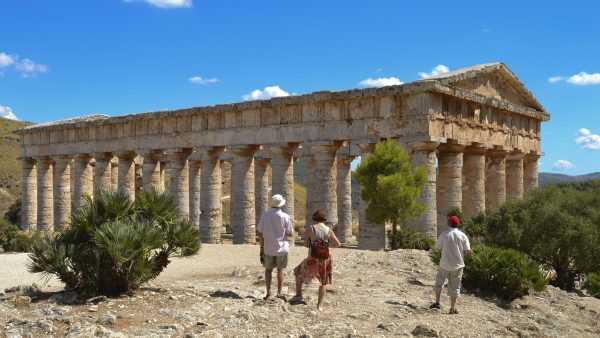
North America
South america, thematic guides.

Castles in Jordan
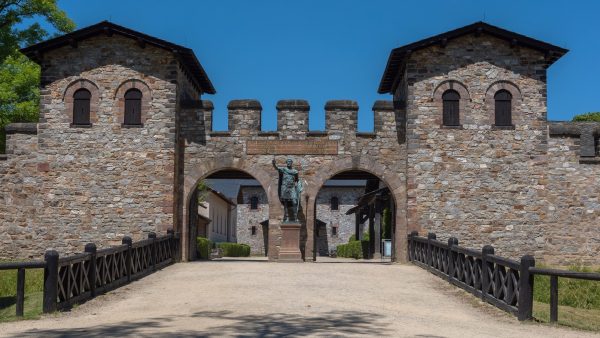
Cave Art France
Megalithic Europe
Roman world, ancient egypt, castles & palaces, world war 2, recently published articles.
- Travel Tips ·
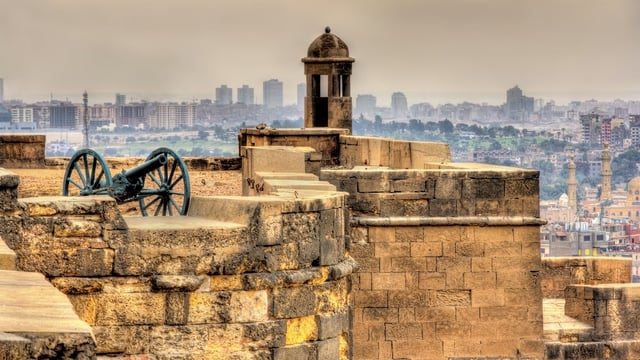
An Egyptian Archaeologist’s Guide to Visiting Egypt During Ramadan
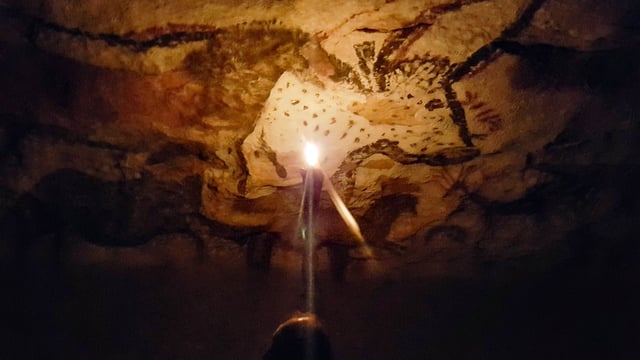
Lascaux II – the First Lascaux Replica
- France ·
- France Travel Ideas

Les Eyzies – A Guide to the World Capital of Prehistory
Create itineraries & travel lists.
Archaeology Travel is more than a collection of articles with useful information. Ours is a truly unique travel website allowing you to benefit from the experience of others and create individualised itineraries and travel lists that suit your interests.
We have built a complete custom itinerary system that allows you to plan your trips more efficiently.
Although the system is currently in Beta, and still being tweaked here and there, it is ready to use. And of course, we are still in the process of adding more content. Read more about Using the Website and Using the Itinerary .
The website will always remain free for all to access and use, but with reasonable limitations.
To make use of the features available on this website, that is to do anything other than read the information on the pages, you will be required to verify yourself via email. Read more about our Membership Scheme and Register .


Archaeologists make 'stunning' find of banquet hall in Pompeii
A group of archaeologists excavating the doomed city of Pompeii found quite the surprise earlier this week: a banquet hall complete with paintings inspired by the Trojan War.
The discovery was announced earlier this week, The Associated Press noted.
The banquet hall and its mosaic floor were uncovered during a project to help prevent further demise of the ruins of Pompeii.
ANCIENT TOMB FILLED WITH GOLD, SACRIFICIAL VICTIMS UNCOVERED BY ARCHAEOLOGISTS: 'SPECIAL TYPE OF BURIAL'
Pompeii was a bustling city near Naples until the eruption of Mount Vesuvius in A.D. 79. The volcano destroyed the entire city, killing thousands — yet left it remarkably preserved.
The city sat under a layer of volcanic ash for centuries until it was re-discovered in the 18th century, says the website for the Smithsonian.
READ ON THE FOX NEWS APP
Since then, it has become a popular tourist destination and archaeological dig site.
Pompeii was named a UNESCO World Heritage Site in 1997, the UNESCO website says.
ARCHAEOLOGISTS UNCOVER HOARD OF ANCIENT SKELETONS PART OF 'COMPLEX FUNERARY SYSTEM'
The ruins of Pompeii is the world's only archaeological site that "provides a complete picture of an ancient Roman city," said UNESCO.
The newly discovered banquet hall was likely used for "refined entertaining," said Gabriel Zuchtriegel, director of the Pompeii archaeological park, according to the AP.
The room's black walls meant that smoke from oil lamps would be hidden, he also said.
The banquet hall is about 45 feet long and 18 feet wide.
It opens to a courtyard located near a staircase, the AP noted.
ARCHAEOLOGISTS EXCAVATE 700-YEAR-OLD BARCELONA BUILDING THAT ONCE HOUSED A CHOCOLATE FACTORY
The images painted on the walls include Helen of Troy, Apollo and Cassandra.
The paintings were likely meant to both entertain and to "provide conversation starters," the same source said.
Previously, excavations of Pompeii had focused on the "elaborately frescoed villas" belonging to the city's upper-class residents.
CLICK HERE TO SIGN UP FOR OUR LIFESTYLE NEWSLETTER
Recently, these newer excavations have centered on parts of the city where the middle class and servants lived.
The banquet hall was discovered during an excavation that was intended to make the Pompeii archaeological park more sustainable in the wake of climate change.
The Associated Press contributed reporting.
For more Lifestyle articles, visit www.foxnews.com/lifestyle .
Original article source: Archaeologists make 'stunning' find of banquet hall in Pompeii
- Login or Register
Professionals
- Annual Meeting
- Grants & Awards
- Professional Directory
AIA Societies
- Find a Society
- Society Grants & Awards
- Society News
For the Public
- International Archaeology Day
- Interactive Digs
- National Lecture Program
- Events Calendar
- Site Preservation
- Archaeology Magazine
- Introduction to Archaeology
- Lesson Plans
- Skype a Scientist
- Become a Member
- Member Benefits
- Archaeology Archive
- Member Login
- Dollars at Work
- Ways to Give
AIA Tour Programs
- Planning Stages
- Lecturers/Hosts
- Mailing List
- eNewsletter
- ArchaeoCon 2024: From the Archives!
Archaeological-themed tours for the curious to the connoisseur
AIA Tours offers in-depth land trips that range from comfortable to ultra-luxurious and cruises aboard outstanding small ships that can dock and anchor at historic ports and towns that larger ships simply cannot visit. See our current Tours Schedule , contact us if you would like to receive a copy via email or postal mail. Call 800-748-6262 or email [email protected] .
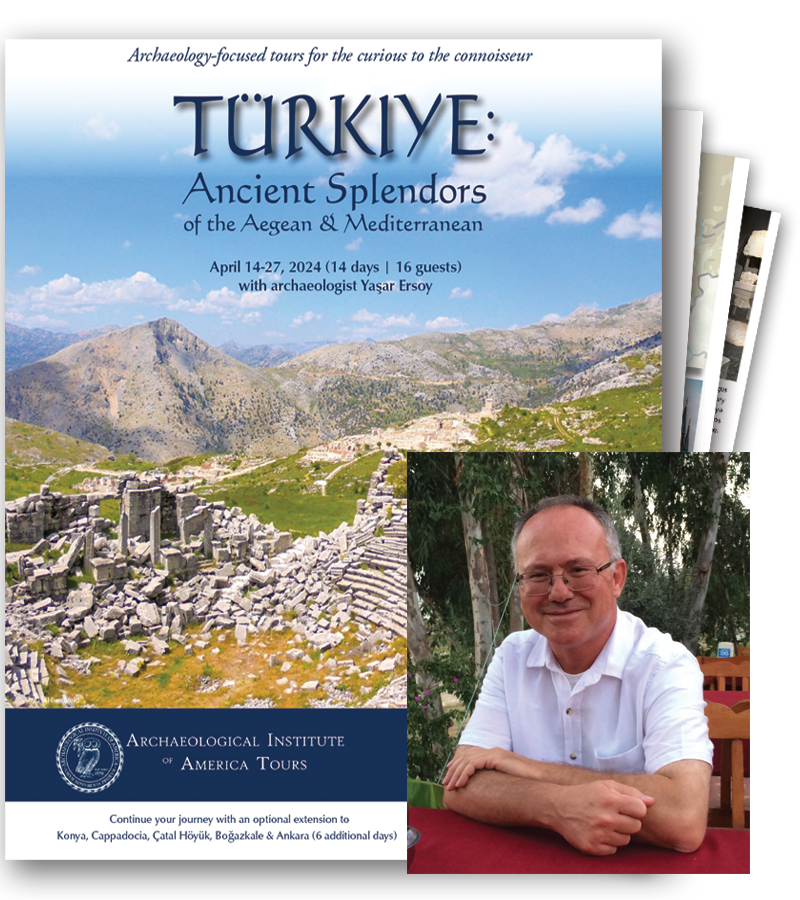
April 14-27, 2024 (14 days)
with AIA lecturer/host Yaşar Ersoy
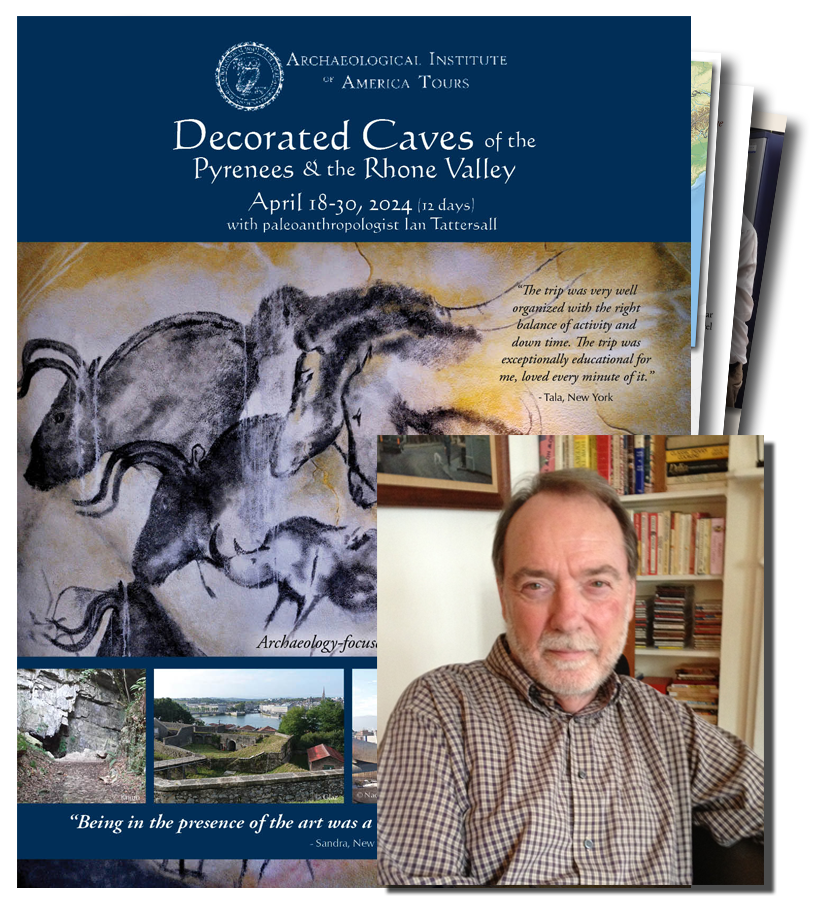
April 18-29, 2024 (12 days)
with AIA lecturer/host Ian Tattersall
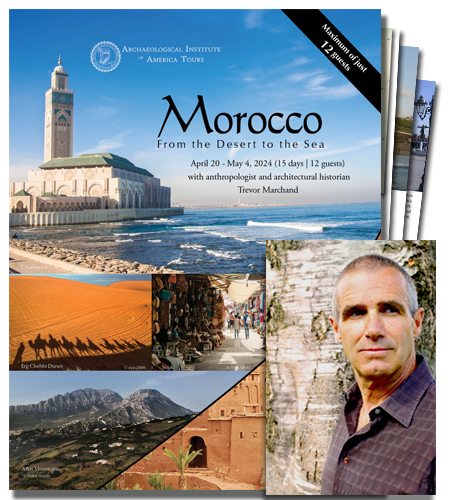
April 20 - May 4, 2024 (15 days)
with AIA lecturer/host Trevor Marchand
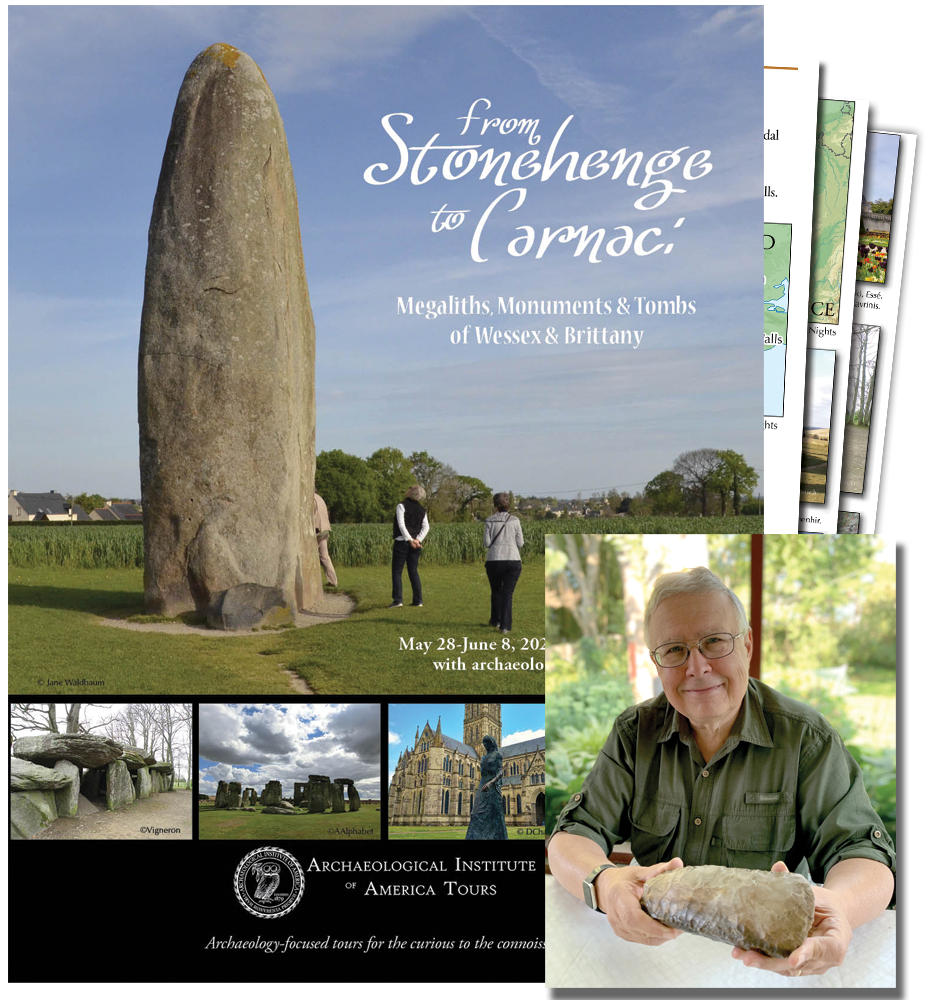
May 28 - June 8, 2024 (12 days)
with AIA lecturer/host Peter Bogucki
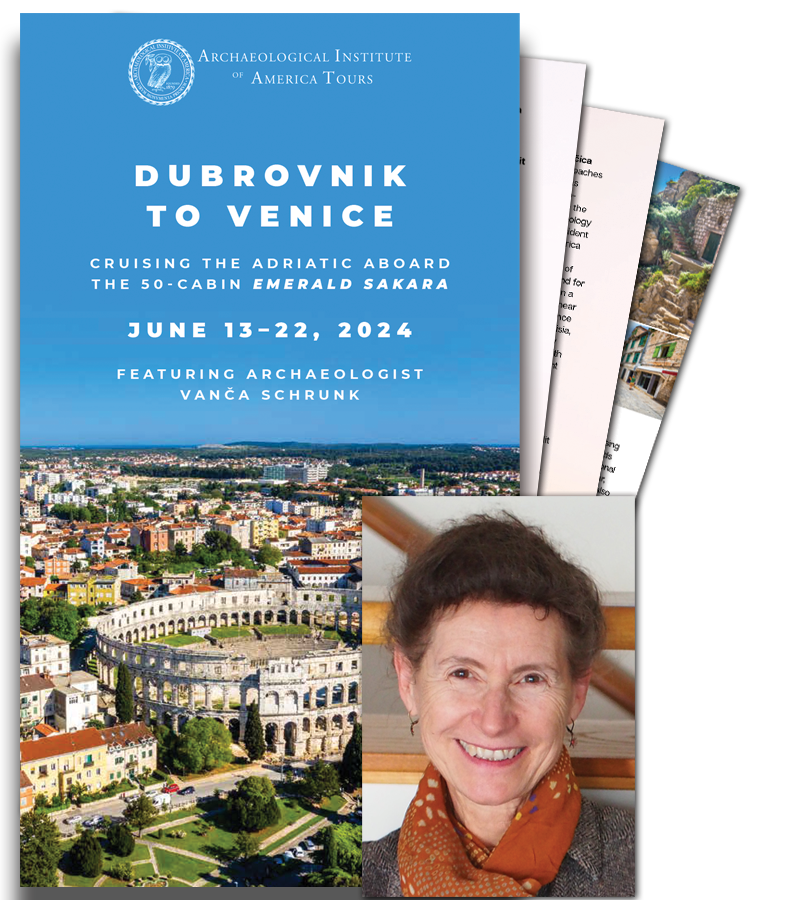
June 13-22, 2024 (10 days)
with AIA lecturer/host Ivančica Schrunk
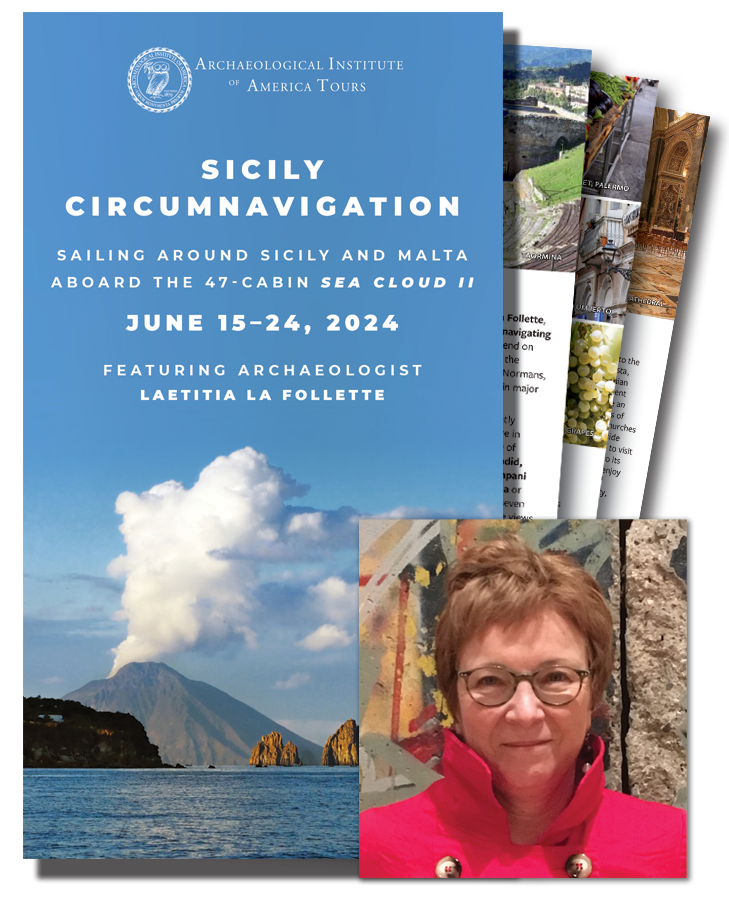
June 15-24, 2024 (10 days)
with AIA lecturer/host Laetitia La Follette

July 29 - August 8, 2024 (11 days)
with AIA lecturer/host Val Turner
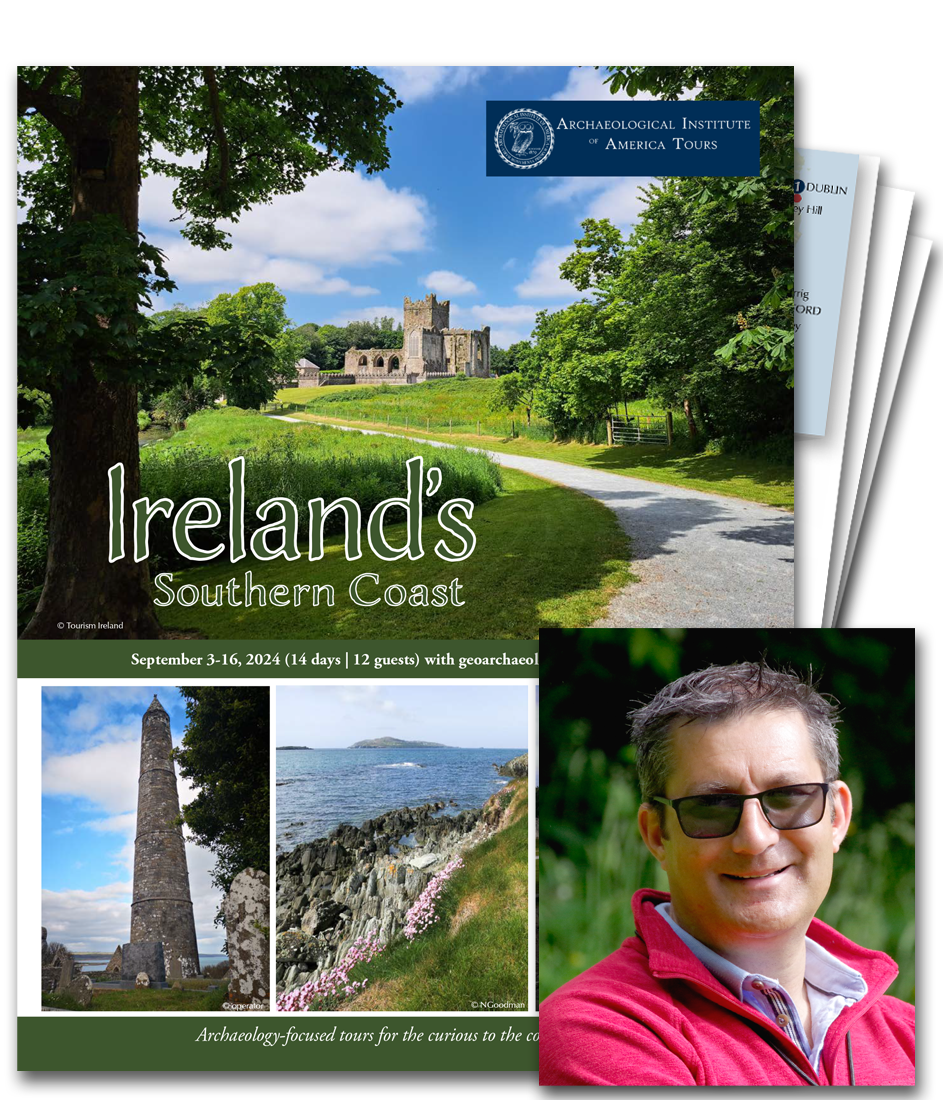
September 3-16, 2024 (14 days)
with AIA lecturer/host Stephen Mandal
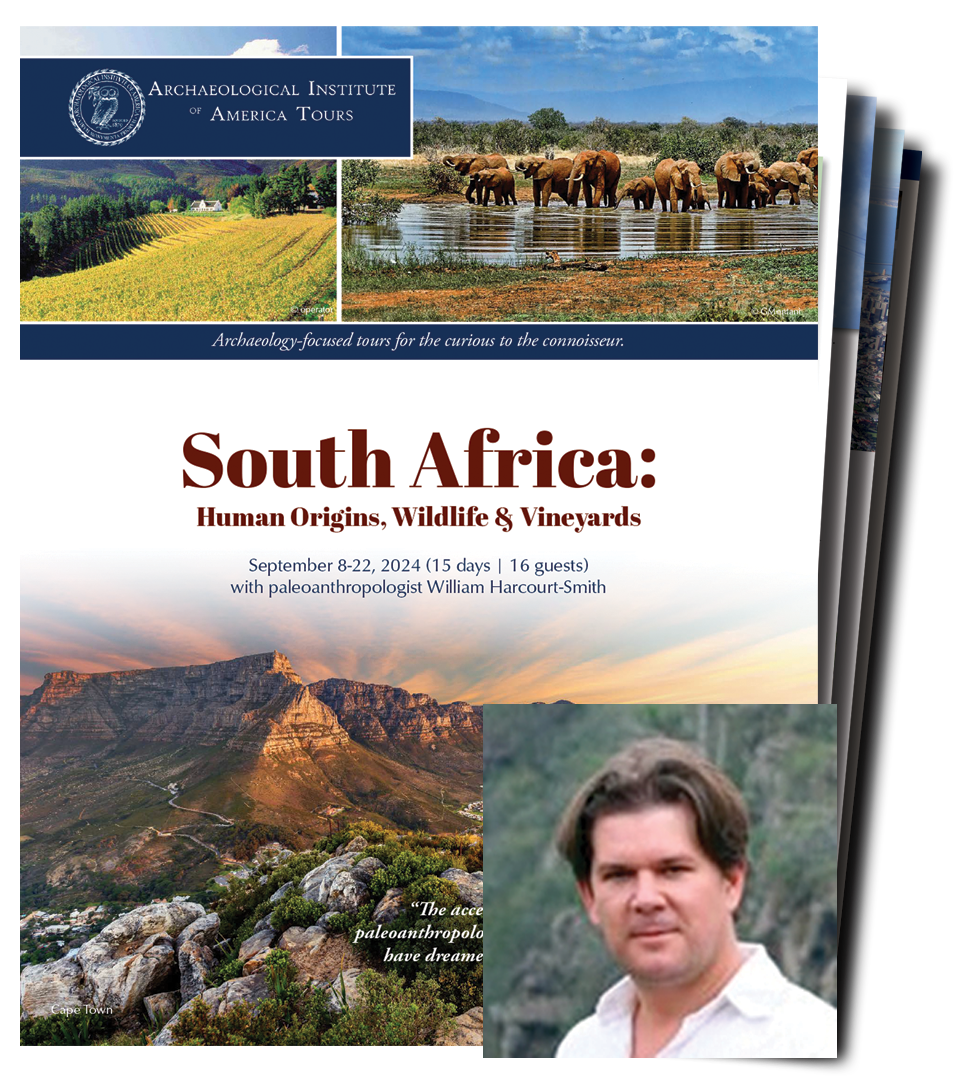
September 8-22, 2024 (15 Days)
with AIA lecturer/host William Harcourt-Smith
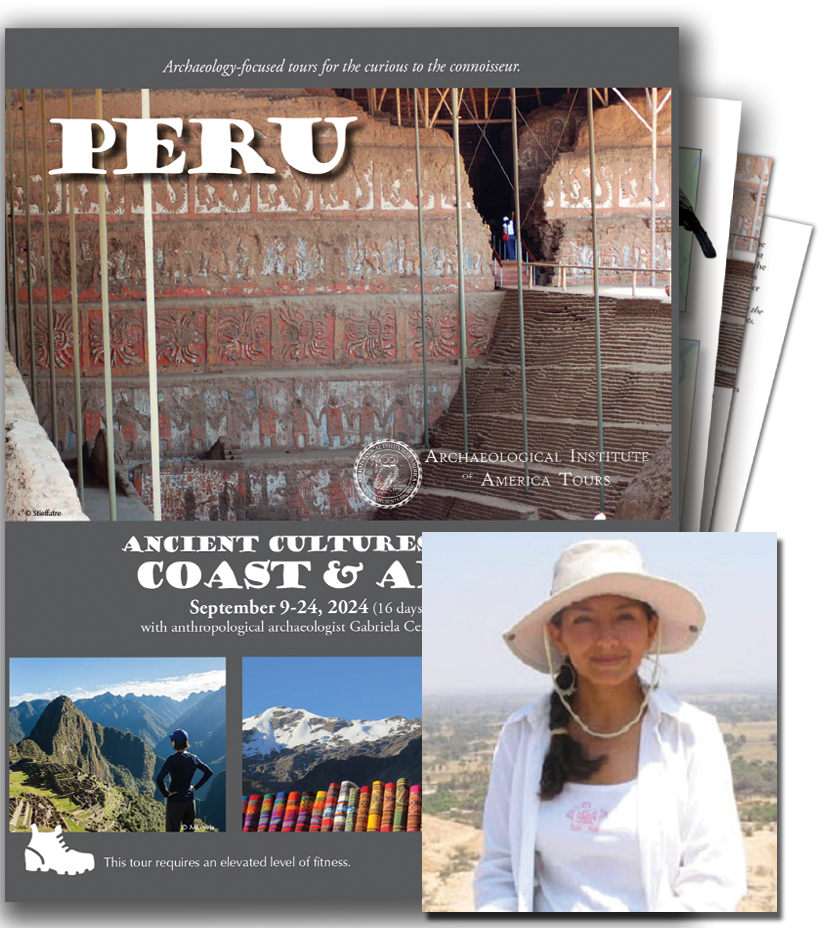
September 9-24, 2024 (16 days)
with AIA lecturer/host Gabriela Cervantes-Quequezana
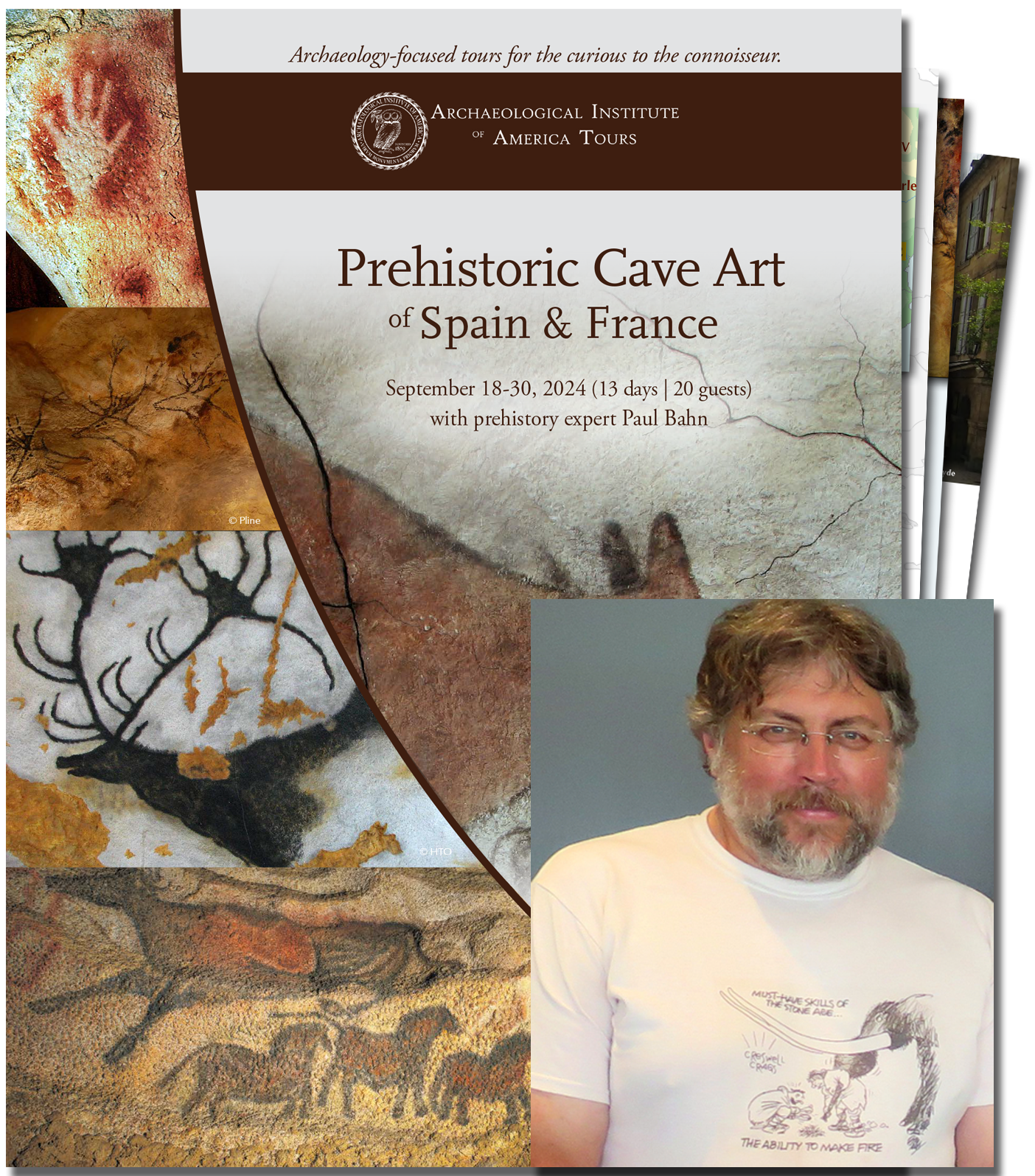
September 18-30, 2024 (13 Days)
with AIA lecturer/host Paul G. Bahn
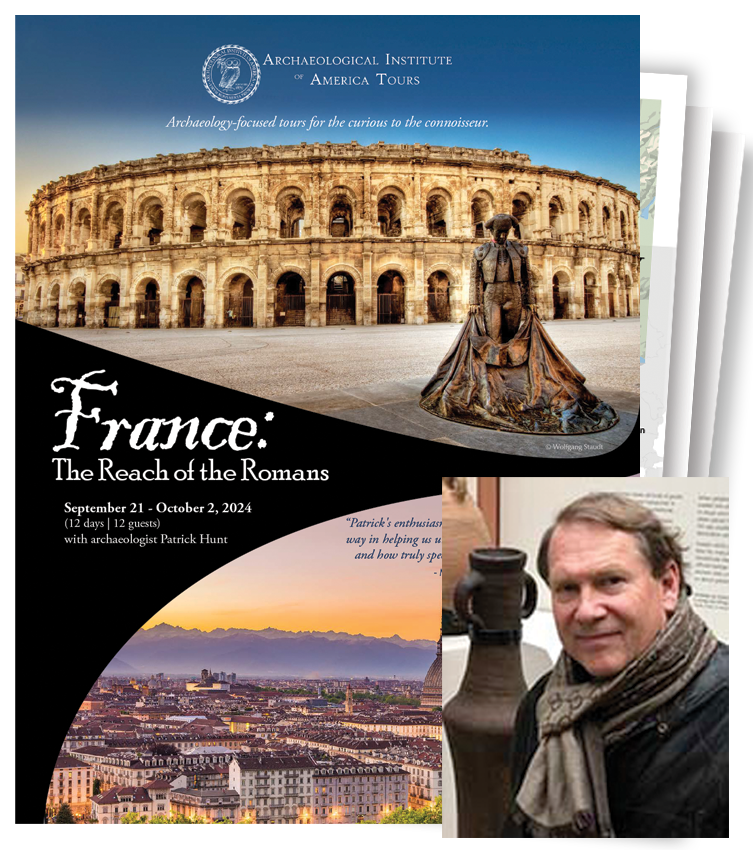
September 21 - October 2, 2024 (12 days)
with AIA lecturer/host Patrick Hunt
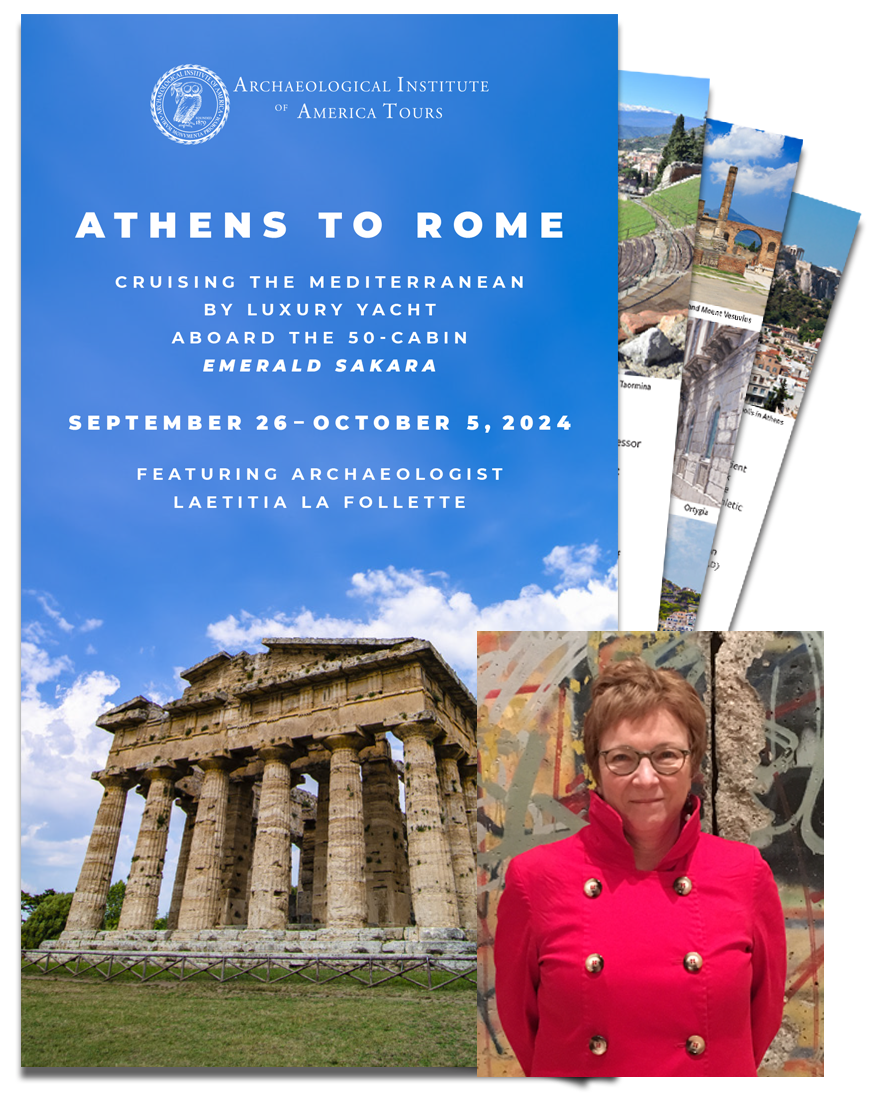
September 26 - October 5, 2024 (10 days)
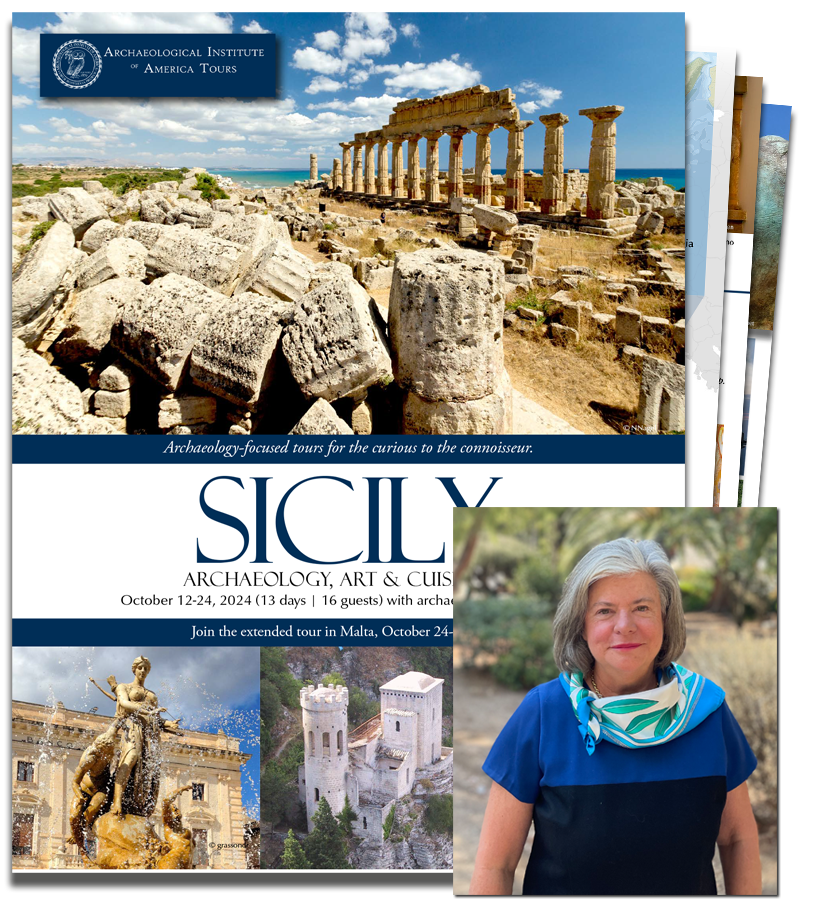
October 12-24, 2024 (13 days)
with AIA lecturer/host Jenifer Neils
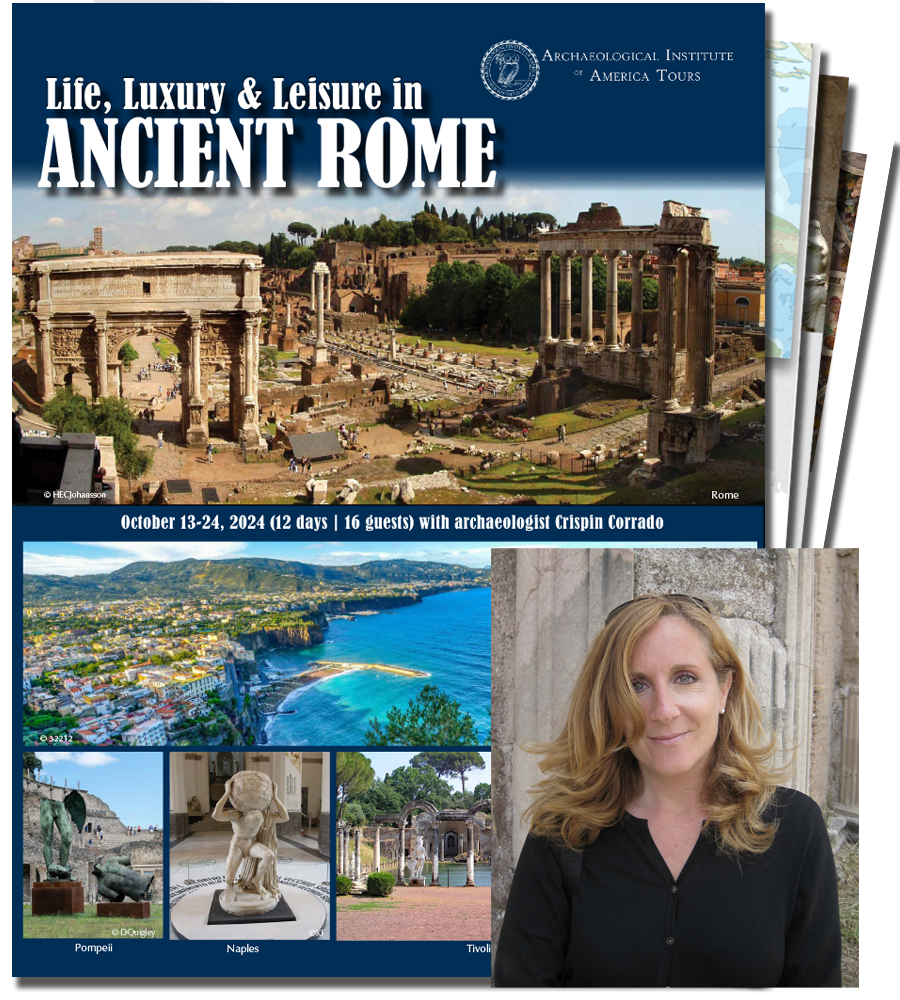
October13-24, 2024 (12 days)
with AIA lecturer/host Crispin Corrado
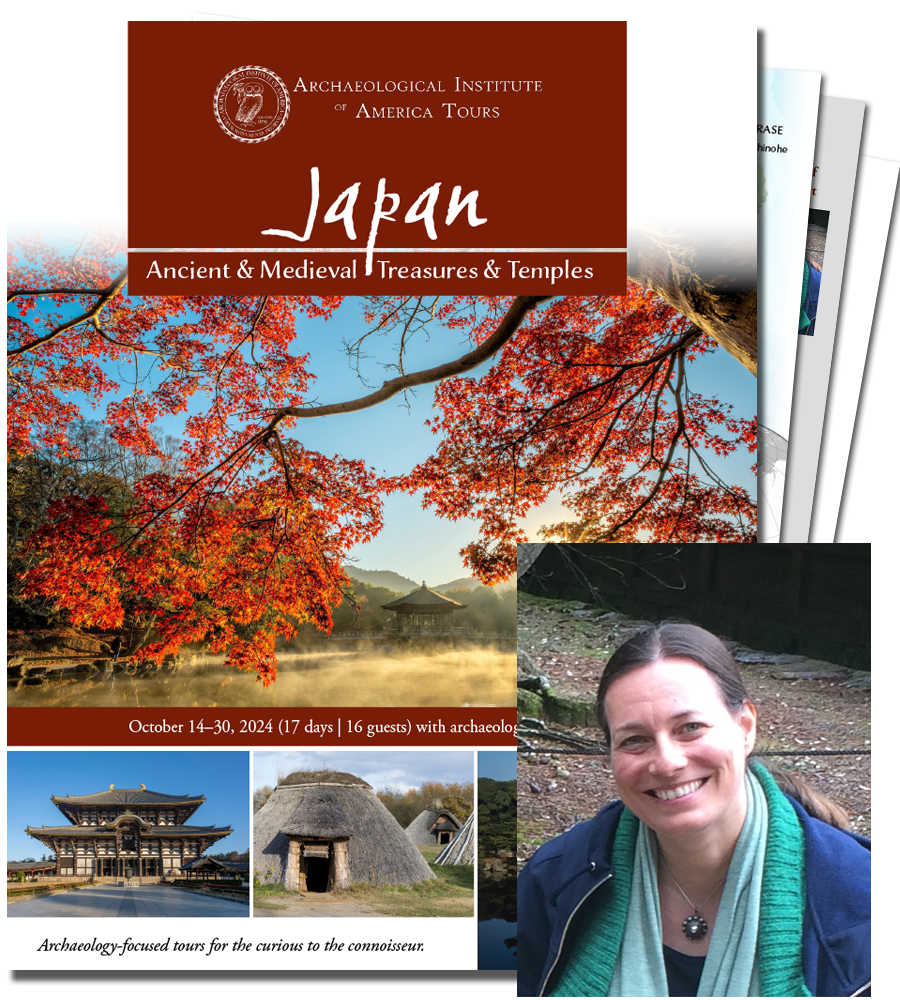
October 14-30, 2024 (17 days)
with AIA lecturer/host Ilona Bausch
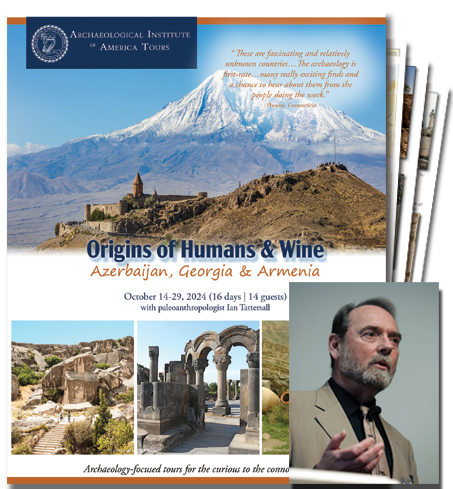
October 14-29, 2024 (16 days)
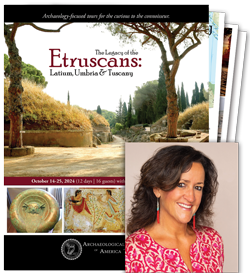
October 14-25, 2024 (12 days)
with AIA lecturer/host Lisa C. Pieraccini
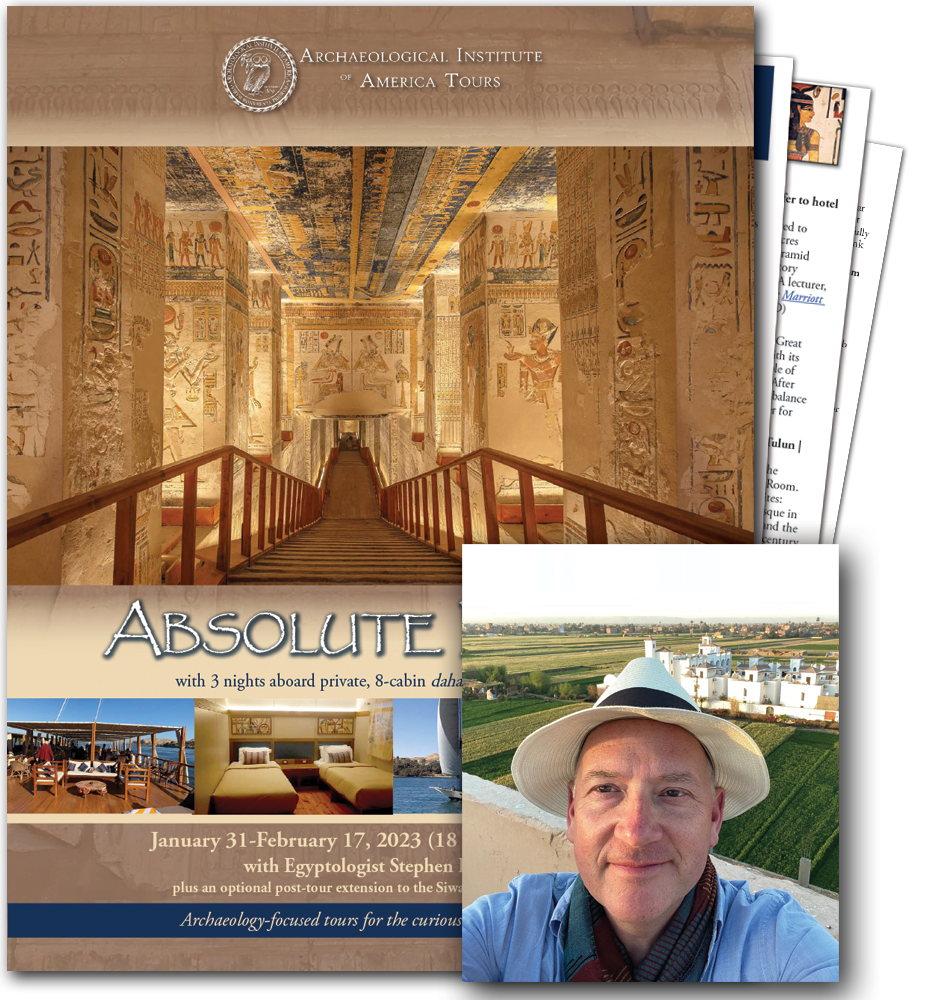
January/February 2025 in the planning stages (18 days)
with AIA lecturer/host Stephen Harvey
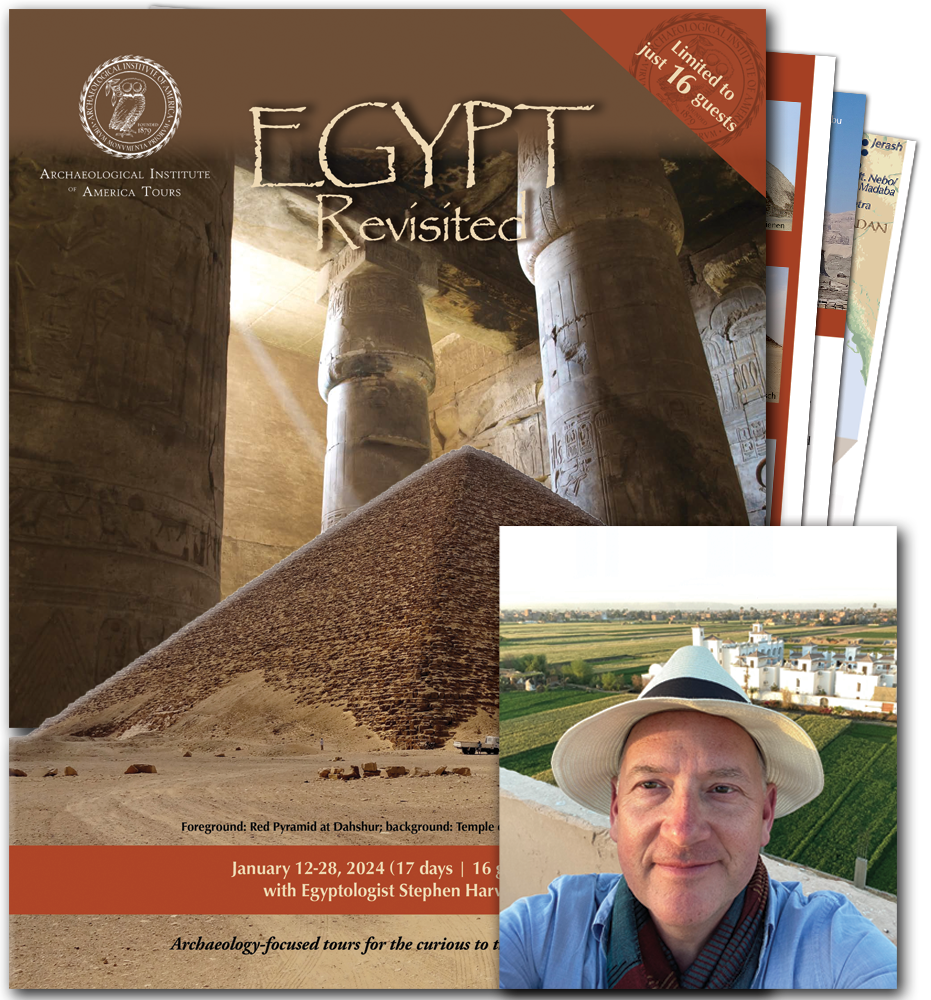
January/February 2025 in the planning stages (17 days)
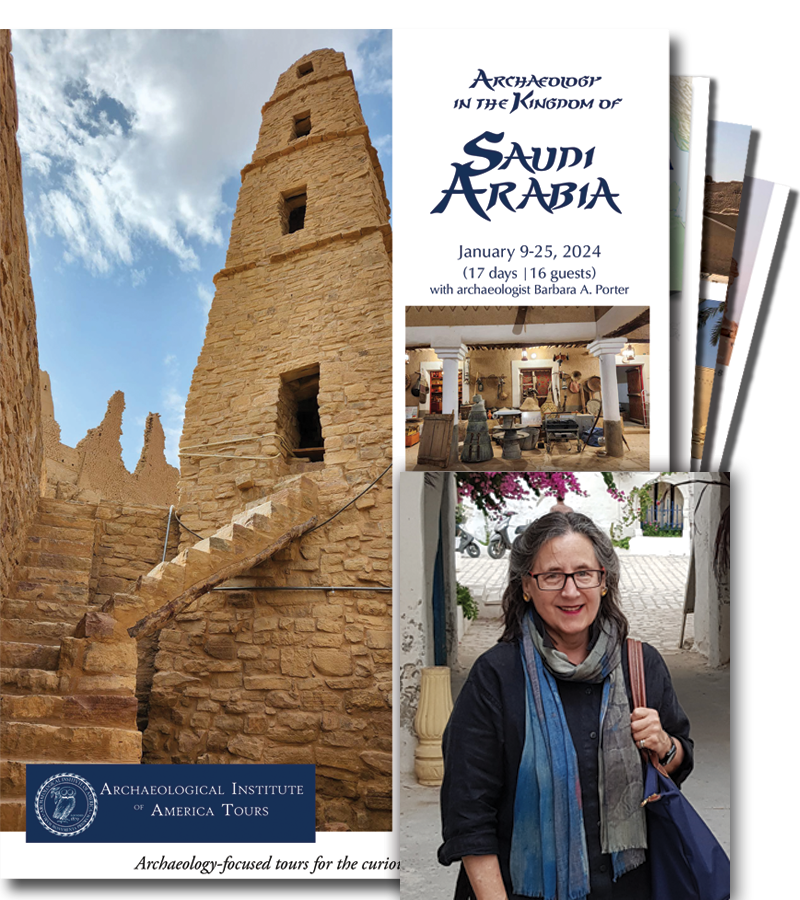
January 2025 in the planning stages (17 days)
with AIA lecturer/host Barbara A. Porter
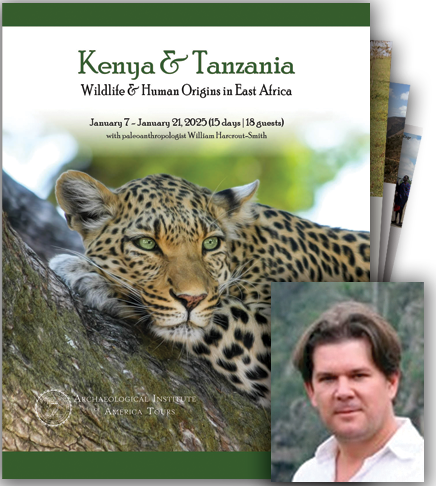
January 7-21, 2025 (15 days)
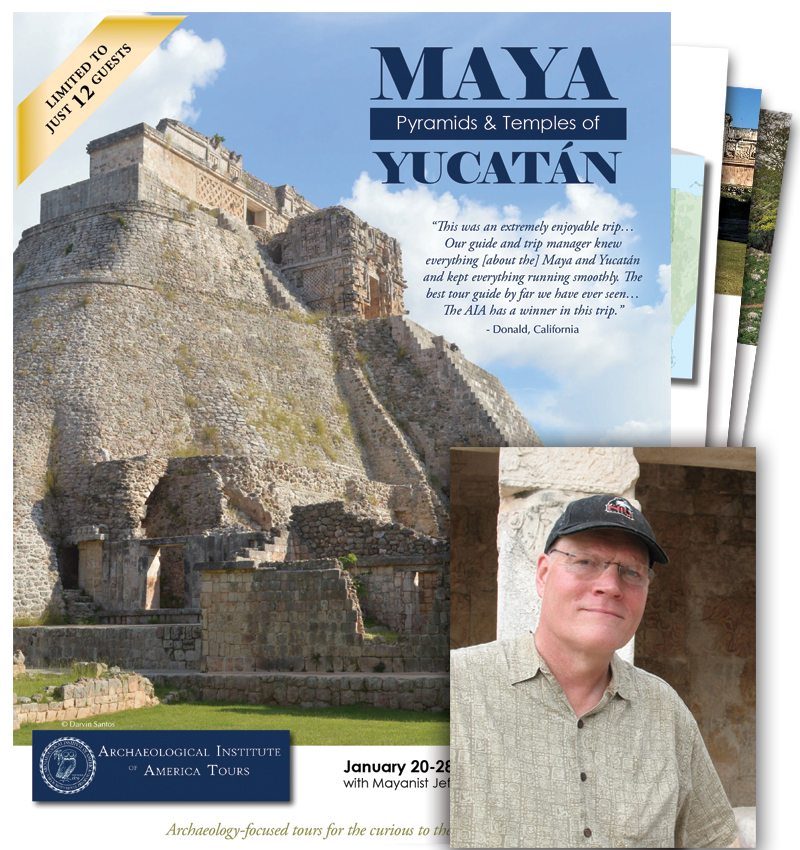
January 2025 in the planning stages (9 days)
with AIA lecturer/host Jeff Karl Kowalski
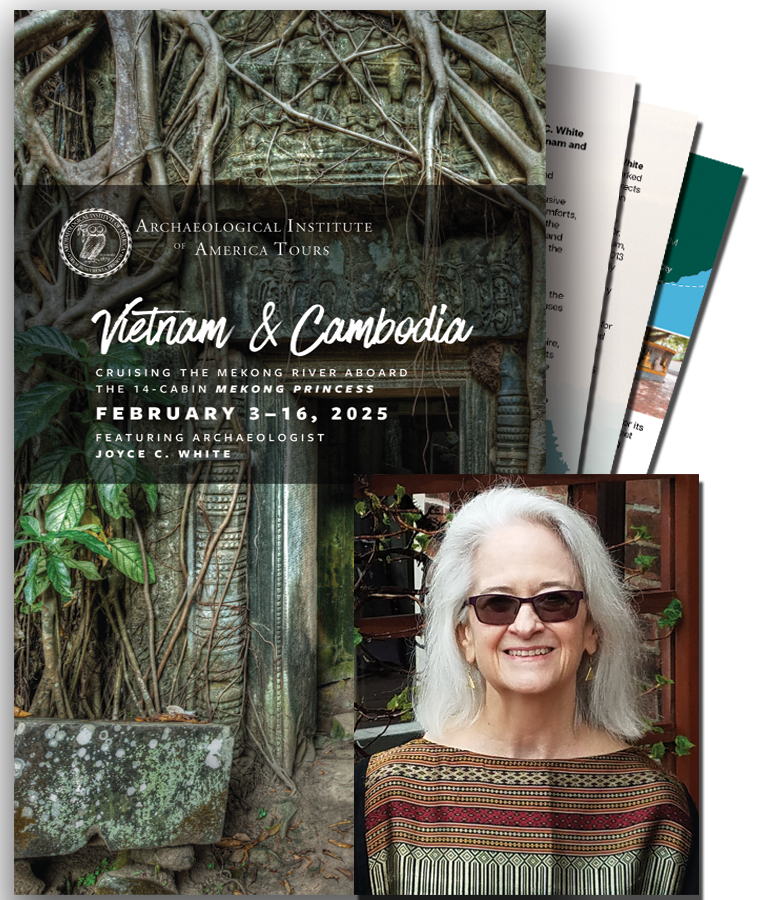
February 3-16, 2025 (14 days)
with AIA lecturer/host Joyce C. White
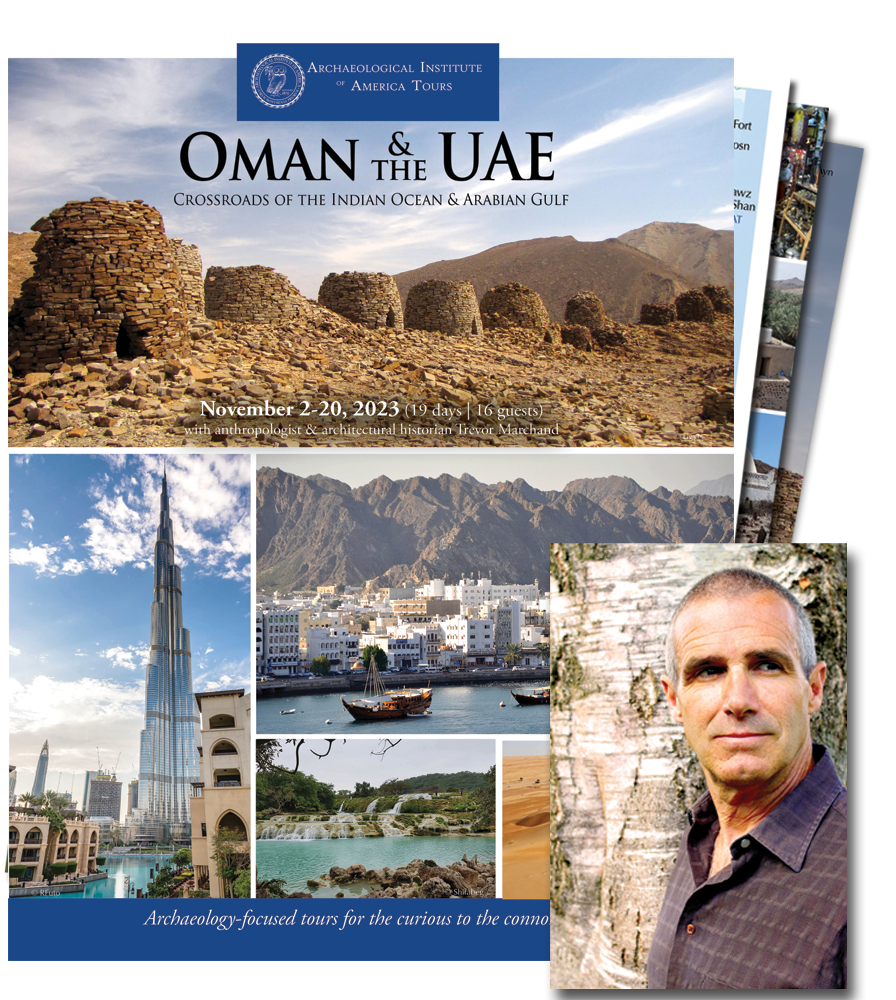
February 6-24, 2025 (19 days)
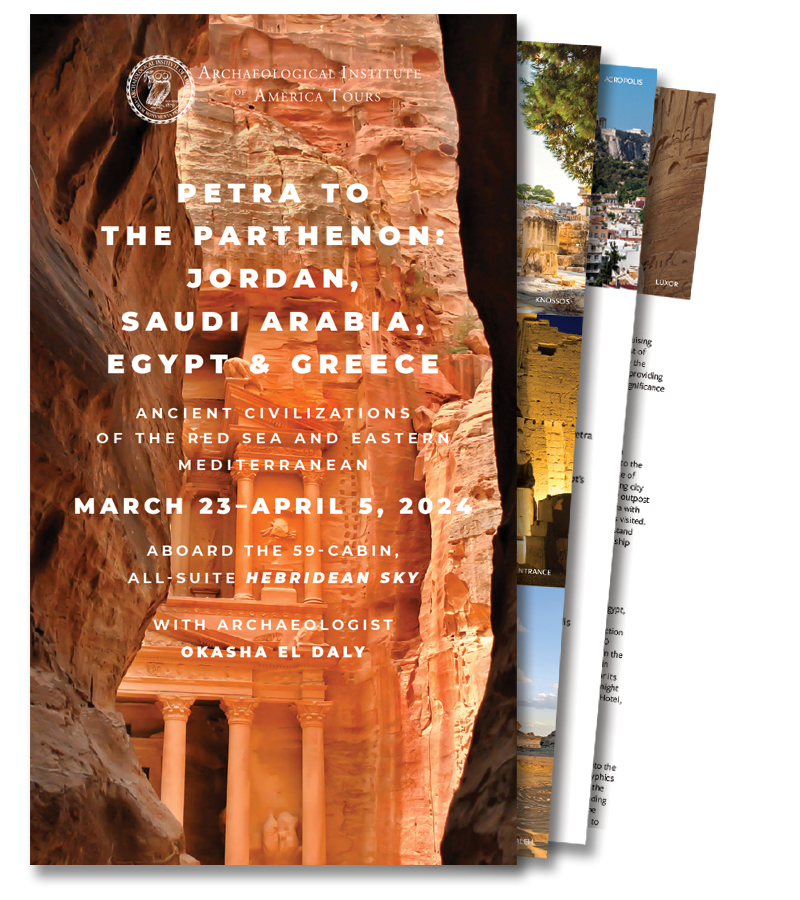
October 2025 in the planning stages (14 days)
Archaeological Institute of America
Back to top.
Copyright © 2024, Archaeological Institute of America. All Rights Reserved. | Privacy Policy | Yelling Mule - Boston Web Design
Frescoes buried by volcano uncovered in ancient dining room in Pompeii

In the ancient city of Pompeii, which was preserved under a blanket of ash and smoke from Mount Vesuvius volcano eruption in 79 A.D., archaeologists have uncovered a banquet room decorated with beautiful frescoes of mythological characters inspired by the Trojan War.
The room “provided a refined setting for entertainment during convivial moments, whether banquets or conversations,” the Pompeii archaeological park said in a statement Thursday.
The walls of the room were painted black to prevent the smoke from oil lamps being seen, explained Gabriel Zuchtriegel, the director of the Pompeii archaeological park.
“People would meet to dine after sunset; the flickering light of the lamps had the effect of making the images appear to move, especially after a few glasses of good Campanian wine,” he said in the same statement Thursday.
The room, with its frescoes and mosaics, was part of “an elegant lifestyle” of its ancient owners, according to the site.
The site at Pompeii contains more than 13,000 rooms across 1,070 residential units, the site says, in addition to public and sacred spaces. According to UNESCO, which lists it as a World Heritage site , Pompeii is “the only archaeological site in the world that provides a complete picture of an ancient Roman city.”
The paintings recently discovered included references to figures from the legendary Trojan War between the early Greeks and the people of Troy in Western Anatolia around the 12th or 13th century B.C., which is featured in ancient Greek works such as the Iliad and Homer’s Odyssey, as well as Roman literature.
The recently discovered artworks include a depiction of the Greek legendary figures Helen of Troy and Paris, the son of the Trojan king who is identified in an inscription by his Greek name, Alexandros. The images also show Cassandra, a figure from Greek mythology who could predict the future, and the god Apollo, who cursed her and left her unable to prevent the capture of Troy.
“The mythological couples provided ideas for conversations about the past and life, only seemingly of a merely romantic nature,” Zuchtriegel said.
“In reality, they refer to the relationship between the individual and fate: Cassandra who can see the future but no one believes her, Apollo who sides with the Trojans against the Greek invaders, but being a god, cannot ensure victory, Helen and Paris who, despite their politically incorrect love affair, are the cause of the war, or perhaps merely a pretext.”
Paintings of mythological figures often adorned the living and dining rooms of Roman houses, where they would entertain guests, the site said.
The uncovered room measured around 49 feet long and 20 feet wide, and opened onto a courtyard with a staircase to the first floor, the site said. Building materials were stored under arches underneath the staircase, where charcoal drawings of “two pairs of gladiators and what appears to be an enormous stylized phallus” were found.
The banquet room was discovered as part of ongoing excavation works in the Regio IX area of the site and a wider project to shore up the perimeter between excavated and unexcavated portions of the site.
It is in the same area as two interconnected houses and a house with a bakery that have already been excavated.
“Pompeii is truly a treasure chest that never ceases to surprise and amaze us because, every time we dig, we find something beautiful and significant,” Italian Culture Minister Gennaro Sangiuliano said, according to a statement .
Other recent discoveries in Pompeii include a prison bakery where enslaved workers and donkeys were held together, and a fresco that appears to show an ancient precursor to pizza.

A Desert Dig Has Revealed a Stunning Ancient Campsite on an Air Force Base
Clues from Paleo-Archaic peoples open a window to America’s distant past.

- A team of geomorphologists discovered an 8,200-year-old campsite on Holloman Air Force Base in New Mexico.
- Dated to the Paleo-Archaic time period, the team found about 70 artifacts indicating human activity at the site.
- Located near White Sands National Park, the campsite predates the formation of the dunes, highlighting historic human movement in the area.
Located on a road cut dubbed Gomolak Overlook, the 49 th Civil Engineer Squadron worked with a group of geologists (160 miles southeast of Albuquerque, near White Sands National Park) to dig 6.5 feet below the surface and discover the ancient campsite.
“The formation of the white sand dunes inadvertently buried the site, with windblown silt protecting the delicate archaeological remains,” Matthew Cuba, 49 th CES cultural resource manager, said in a statement . “This site marks a pivotal moment in shedding light on the area’s history and its early inhabitants.”
Paleo-Archaic people—descendants of the first humans in the Americas and the people group to first start growing domesticated plants on the continent—left about six dozen items at the location, all of which offer a look into early human adaptation to the region and the environmental changes that have happened since. Sites like these also showcase settlement patterns of the Paleo-Archaic people throughout their seasonal travels.
“Found on the site were approximately 70 items, ranging from flake stones to a rare example of an early ground stone , providing valuable clues about past human activities,” Cuba said. “We also uncovered a series of hearths, or community campsites, with remnants of mesquite charcoal which is a tremendous find in and of itself.” Mesquite trees had—and still have—a wealth of uses , and were plentiful in the area.
NASA believes the unique gypsum-based sands of the White Sands National Park began forming dunes roughly 6,500 to 7,000 years ago. That’s more recently than the campsite would have been in use. NASA states the dunes move as much as 30 feet per year and cover 275 square miles.
So, the Paleo-Archaic period predates the dune-forming in New Mexico—the National Park Service states that this time period begins with the end of the Paleoindian period and includes the adoption of agriculture. The Archaic period in the American Southwest features subregional spatial divisions that show broad territories throughout which people groups inhabited and coexisted. Finding Early Archaic sites in the Southwest is rare, but not unheard of, NPS stated.
Holloman Air Force Base has proven a rich historical location, with 400 archaeological discoveries unearthed on the property. “The Department of Defense’s stewardship of vast tracts of land, including areas between White Sands National Park and Holloman, inadvertently protects numerous documented and undocumented archaeological resources,” Scott Dorton, 49 th CES environmental chief, said in a statement. “As a result, some of the best-preserved archaeological records in the Tularosa Basin reside on DoD land.”
Some of the oldest archaeological finds in North America come from this Tularosa Basin, including fossilized footprints dating back roughly 11,000 years that show humans tracking a sloth and 10,000-year-old footprints of a woman and small child.
Cuba said that with each additional find in the area, the research teams have a responsibility to ensure their preservation and protection.
Tim Newcomb is a journalist based in the Pacific Northwest. He covers stadiums, sneakers, gear, infrastructure, and more for a variety of publications, including Popular Mechanics. His favorite interviews have included sit-downs with Roger Federer in Switzerland, Kobe Bryant in Los Angeles, and Tinker Hatfield in Portland.

.css-cuqpxl:before{padding-right:0.3125rem;content:'//';display:inline;} Archaeology .css-xtujxj:before{padding-left:0.3125rem;content:'//';display:inline;}
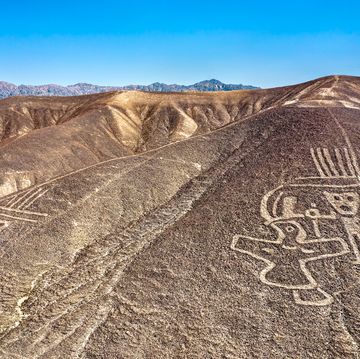
Scientists Found a Lynx Skeleton Layered With Dogs
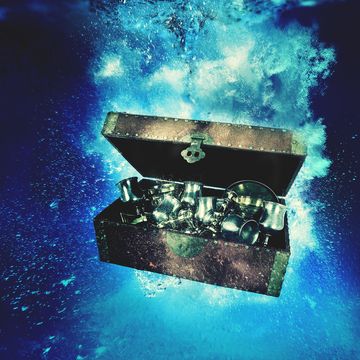
A Crew Is Extracting the Holy Grail of Shipwrecks
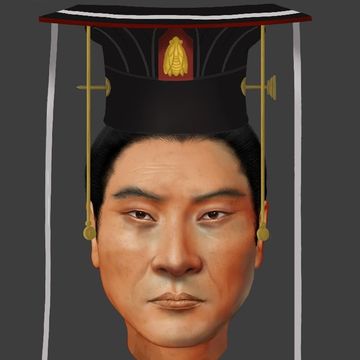
Scientists Reconstructed a Chinese Emperor’s Face
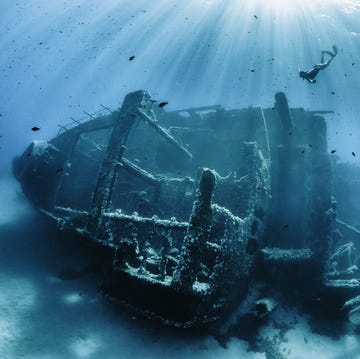
Sunken British Warship from 1742 Identified
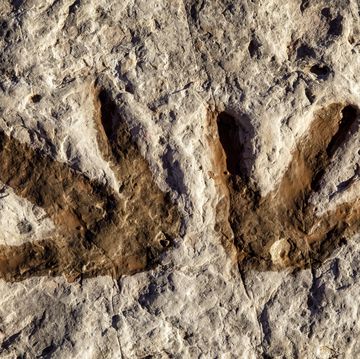
Experts Found Mysterious Symbols Near Dino Tracks
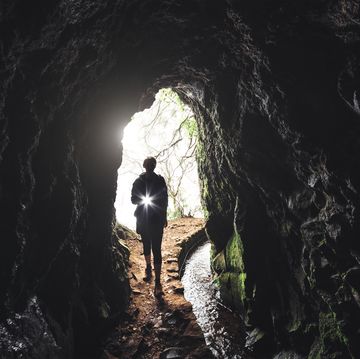
Excavation Revealed a Maze of Hidden Tunnels

‘Vampire’ Has Emerged From Centuries-Old Shroud
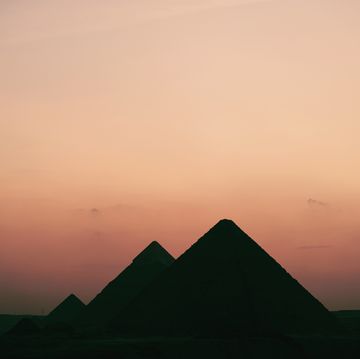
Controversial Pyramid Is Not 27,000 Years Old
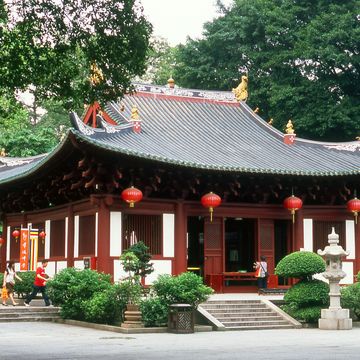
3 Ancient Tombs Reveal New Jin Dynasty Secrets

An Easter Island Discovery Could Rewrite History
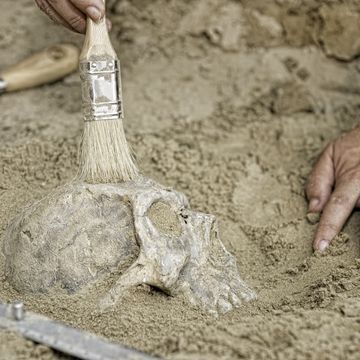
Archaeologist Found a Mass Grave of Plague Victims
DNC Paid Biden Legal Costs in Classified Docs Case: Report
‘NO COMPARISON’
“The DNC does not spend a single penny of grassroots donors’ money on legal bills—unlike Donald Trump,” a DNC spokesperson said.
Desantis quashes civilians’ power to probe police misconduct, a new bill lets police chiefs choose who gets to sit on their oversight boards and greatly reduces what they’re able to review., shohei ohtani’s interpreter surrenders on bank fraud charges.
UP TO 30 YEARS
Ippei Mizuhara turned over his passport and agreed to submit to treatment for gambling addiction.
Dad arrested after kid tells teacher he’s got loaded glock.
BACK TO SCHOOL
A Manchester elementary schooler was reportedly surprised to find his dad’s Glock in his backpack.
Lorne michaels-produced chris farley biopic casts its lead.
REMEMBER WHEN?
Paul Walter Hauser will star in the film about the legendary comedian with “Frozen” star Josh Gad directing.
House passes controversial spying law trump wanted to ‘kill’.
HURDLE AFTER HURDLE
Speaker Mike Johnson cut the FISA extension down from 5 years to two after Trump told Republicans to vote it down.
Nyc’s vessel will finally reopen after spate of suicides.
SAFETY UPDATE
The attraction has been closed since 2021, after four people died by suicide on the landmark.
Top surgeon accused of ruining patients’ transplant chances.
MOTIVE A MYSTERY
He allegedly altered details in a government database to effectively deny them new livers.
Archaeologists make ‘spectacular’ discovery in pompeii ruins.
Night Editor
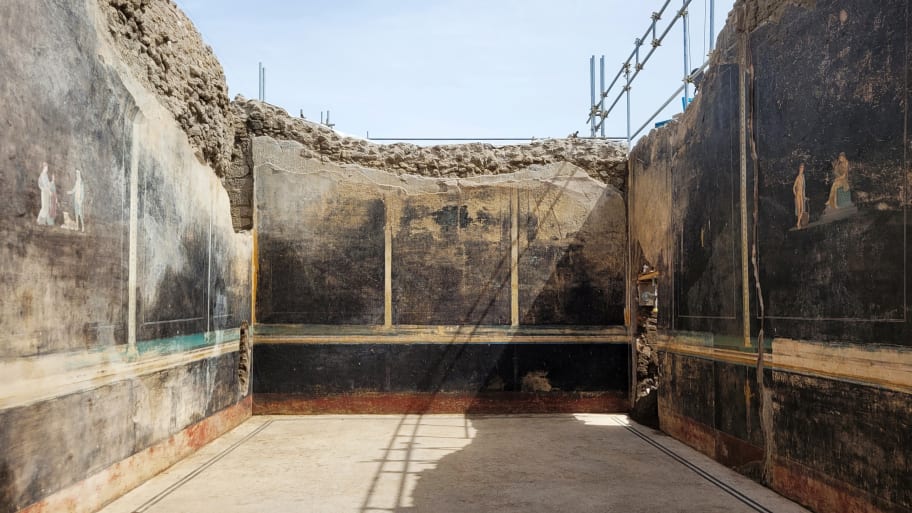
Parco Archeoligico di Pompei
The discovery of some of the finest paintings ever found in the ruins of the ancient Roman city of Pompeii has thrilled archaeologists, who say they found a “spectacular” large banqueting room with “elegant” black walls featuring mythological characters including Helen of Troy. The discovery comes during the biggest dig of the lost city in a generation, according to the BBC. At least one-third of the city still needs to be cleared of volcanic debris, though in the current dig, excavators have already discovered two interconnected houses and a house with a bakery. The newest discovery, the banqueting room, is inspired by the Trojan war and near-complete with a mosaic floor comprised of more than a million individual white tiles, the BBC said. “The walls were painted black to prevent the smoke from the oil lamps being seen on the walls,” Gabriel Zuchtriegel, the Director of the Archaeological park of Pompeii, explained in a statement . “People would meet to dine after sunset; the flickering light of the lamps had the effect of making the images appear to move, especially after a few glasses of good Campanian wine.”
Archaeological dig begins at Cabell Log House: Day 1

STAUNTON — It's a Saturday afternoon and the first day of the archaeological dig at Cabell Log House. There's excitement in the air. Nine students from James Madison University with their professor, archeologist Dr. Dennis Blanton, have conducted two shovel tests so far on the property that are showing positive results. Items recovered could help tell one more untold story of Staunton's Black history.

Students Aidan O'Brien, Phil Elliott and Sean Mennard, stand at a table and sift through dirt from a midden on the property.
"It would be the household dumping area," said Blanton, who stood nearby. That's why there is such a large deposit of things, one of his students said.
"For a shovel test, it’s as good as it gets," said O’Brien. "I’m super happy with our results."
So far, they have found brick, charcoal, red ware and porcelain ceramics, nails, cast iron, a collar button, a 22-caliber bullet casing, green glass and marbles.
Elliott has already been on two digs in Staunton with the professor. He approached Blanton with something in his hand.
"I’m not sure what it is," said Elliott who handed it to him. "I think it's glass."
"It’s gilded glass," said Blanton. "You found gold."
Located at 654 E. Beverley St. in Staunton, the Cabell Log House was built in 1869 by Edmund Cabell, a newly freed enslaved man, after he purchased the land on June 16, 1866 after the Civil War. The price for the property was $50, with Cabell paying the first $10 in gold coins. Cabell constructed the original two room house using traditional log techniques, according to records from Historic Staunton Foundation.
The home was owned by Cabell's descendants for more than a century. It is the only remaining 19th century exposed-log structure in the city, said Historic Staunton Foundation, and a rare example of a post-Civil War home connected to a local African American family.
"The building has a story, but we believe that what’s underground has its own story," said Blanton.
That's why the group launched their first archeological dig at Cabell Log House on April 6, 2024, more than 150 years after Edmund Cabell built his family's home. The Historic Staunton Foundation recently purchased the house and is consulting with Blanton to document the landscape and historic archeological resources on the property.
"Our goal is to support the efforts of Historic Staunton Foundation and the preservation of this property," said Blanton. "But ultimately, this is about learning more about the Black community in Staunton. Their story is not told as well as other stories get told, and archeology is a way to add to it."
Enslaved Black people and those freed after emancipation were not participating in the public sphere in the same way, said Blanton. "Their own history is not being recorded in their own voice. Archeology is a way to give those communities a voice, sometimes for the first time."
The importance can be felt by everyone outside of the house on day one of the dig. The Historic Staunton Foundation, Blanton and his students, and visitors walking by who wandered on to the property to get a closer look, sensed the significance of the work being done. Buried beneath the land are untold human stories of Staunton's Black community that, in time, will surface.
"We’re finding artifacts out here that were handled last by the people who built this house," said Blanton. "It was a landmark moment after emancipation for this gentleman to come up with $50 and to buy this property and put up this house and live as a free person for the first time in his life. And that just doesn’t get told."
According to records from Historic Staunton Foundation, Edmund Cabell's son, Washington Cabell, and his wife were the second-generation owners. The house was inherited by Cabell's daughters, Mary Cabell and Emma Cabell Smith, following his death in 1932. Mary Cabell lived in the house until her death in 1972 and Emma Cabell Smith lived there until 1987.
From an archeological standpoint, Blanton said Cabell Log House provides a good comparison with what they learned on the Woodrow Wilson property last summer.
"We excavated over there and found a slave occupation which would predate the Civil War," said Blanton. "This occupation had freed Blacks living here after the Civil War. So now we’re going to have archeological information about the period of slavery and the period following emancipation."
At another shovel test in front the house, students documented in detail the overhead view of what they saw. One of Blanton's students, Kyle Mitchell, held a soil-colored chart for the dig that shows all the different colors and codes.
"We put the dirt behind so it lines up," said Mitchell. "Most of what we see is seven and a half."
The reddish-brown hues indicate there's iron oxide in the soil. The iron gives the soil its reddish color. The darker brown or black colors means the soil has a high organic matter content which darkens the natural mineral colors.
Blanton said he hopes that they will be able to continue way beyond the first days, maybe even over the course of a couple years.
"We’ll see. A lot of it will hinge on what we see in the ground today and the next few times we come back. But so far, the evidence bodes really well. It’s a very rich site, and it’s in very good condition. A lot of archeological sites are not in good condition," he said.
"We really want this to be a community project," said Heather Cole from the Historic Staunton Foundation. Given the discoveries made on dig day one, Cole and Blanton want to involve local Black history groups in the work being done at Cabell Log House.
"Fundamentally, it’s really their history," said Blanton. "I want to do what I can to record it but it would be far better if they were involved in what we’re doing. We recognize that that’s something that should happen and I think it will."
The News Leader plans to cover the work being done at the Cabell Log House. To help readers, we will title each story numerically (day 1, day 2) as we continue coverage moving forward.
Solar eclipse 2024: Will the clouds spoil the show?
THE DIGEST: Redbeard Brewing Company and African American Heritage Festival Foundation to host concerts
More: Staunton home heavily damaged in overnight fire
Plan Your Trip to Elektrostal: Best of Elektrostal Tourism
Essential elektrostal.

Elektrostal Is Great For
Eat & drink.

- Apelsin Hotel
- Elektrostal Hotel
- Apart Hotel Yantar
- Mini Hotel Banifatsiy
- Restaurant Globus
- Amsterdam Moments
- Cafe Antresole
- Viki Cinema
- Statue of Lenin
- Park of Culture and Leisure
ELECTROSTAL HISTORY AND ART MUSEUM: All You Need to Know BEFORE You Go (with Photos)
- (0.19 mi) Elektrostal Hotel
- (1.21 mi) Yakor Hotel
- (1.27 mi) Mini Hotel Banifatsiy
- (1.18 mi) Elemash
- (1.36 mi) Hotel Djaz
- (0.07 mi) Prima Bolshogo
- (0.13 mi) Makecoffee
- (0.25 mi) Amsterdam Moments
- (0.25 mi) Pechka
- (0.26 mi) Mazhor

IMAGES
VIDEO
COMMENTS
Give presentations on your findings at a local museum. Where you stay depends on which archaeological site you're working on. Make the most of your free time and explore, and do things like plan a trip to Transylvania! Program fees begin at $2,970, with five weeks costing $4,690 (or $938 per week). Read more here.
With these concerns in mind the Archaeological Institute of America (AIA), ARCHAEOLOGY magazine, and the Adventure Travel Trade Association (ATTA) have created a manual of good practices for tour operators and the tourists who visit archaeological sites. The guide outlines practices that will allow for proper, sustainable archaeological tourism ...
The details: The 2022 project runs from June 23 to August 4, with two half-sessions available. There is a minimum stay of three weeks. The price to participate in this archeological dig range from $1500 to $2500, depending on the length of stay and registration fees. College credit is available through La Sierra University.
AIA Tours offers in-depth land trips that range from comfortable to ultra-luxurious. Download our the latest AIA LAND Tours Schedule, contact us if you would like to receive a copy via email or postal mail. Call 800-748-6262 or email [email protected]. Tunisia: Phoenicians to Romans, Mosaics to Mosques.
What is archaeological or heritage tourism? Heritage sites are places of archaeological or historical significance that have been preserved. ... and food attracts animals that may dig, nest, or burrow on the site. Pets can be very destructive to archaeological sites—leave your pooch behind when you are visiting a site. Share the information ...
Toll Free: 800-748-6262; From outside the U.S. & Canada: 603-756-2884; Monday through Friday, 9am to 5pm Eastern time. Email: ; Fax: 603-756-2922; Mail: PO Box 938, 47 Main St., Suite One, Walpole, NH 03608-0938. Find Us on Facebook! Travel with an engaging and informative AIA Tours lecturer, plus trip managers and local guides, on ...
Search the Globe for a Dig. Interactive Digs. Not everyone is able to get out into the field and put their trowel into the ground, so let us bring the excavation experience to you. The AIA and ARCHAEOLOGY's Interactive Digs allow you to follow the progress of excavations around the globe. Participating projects post fieldnotes, personal ...
Preparing for a Dig. Archaeological fieldwork is not the romantic treasure hunt sometimes seen in the movies. On the contrary, archaeology is a blend of scientific disciplines requiring methodological attention to procedure and detail. ... Read More. Archaeological Tourism Guidelines. The AIA-ATTA Guide to Best Practices for Archaeological ...
A Guide to Best Practices for Archaeological Tourism. August 11, 2008. Concerned by the threat posed to ancient sites by increasing traffic and inadequate or under-funded site management plans, the AIA and ARCHAEOLOGY have joined with the Adventure Travel Trade Association in creating a guide to good practices for archaeological tourism.
Interactive Digs. Follow an excavation project as it happens. Interactive Digs are an opportunity to see an excavation unfold in real time. Archaeologists post regular updates from the field, answer questions, and describe life on a dig. For more digs, please see InteractiveDigs.com.
Embark on world culture tours with National Geographic. Expert guides explain historic treasures & archaeological wonders. Experience ancient history with us.
If you've ever been captivated by discoveries of civilizations long buried, step into the world of an active archaeological dig with Ancient Odysseys. Infinitely rewarding and exciting, each of the excavations featured here will provide the opportunity for you to work and train alongside archaeologists out in the field. With your help ...
Archaeological Site of Troy. Troy, with its 4,000 years of history, is one of the most famous archaeological sites in the world. The first excavations at the site were undertaken by the famous archaeologist Heinrich Schliemann in 1870. ... under the authority of the Ministry of Culture and Tourism, designated the Archaeological Site of Troy as ...
For that sort of exclusive experience, you have to go the extra mile. To that end, check out our guide to 10 off-the-beaten-path archaeological sites every history lover should consider adding to their World Travel Bucket List. READ MORE: How Mass Tourism is Destroying 30+ Destinations Travelers Love. photo by AJ Oswald via Creative Commons
Call 1.406.541.2677. Start Planning My Trip. Embark on a journey through time with our selection of archaeological site visits in the United States, where history is etched into the very landscape. Over 8 to 26 days, delve into America's rich tapestry on river cruises that meander along storied waterways like the mighty Mississippi.
Whatever your preferred style of travel, budget or luxury, backpacker or hand luggage only, slow or adventure, if you are interested in archaeology, history and art this is an online travel guide just for you. Here you will find ideas for where to go, what sites, monuments, museums and art galleries to see, as well as information and tips on ...
An incredible history set against a rugged landscape. From US $1,800 to US $2,100 10 days ex flights. Small group travel: 2024: 21 Jun, 6 Sep, 13 Sep, 20 Sep, 4 Oct, 11 Oct, 25 Oct. 2025: 21 Mar, 11 Apr, 2 May, 23 May, 6 Jun, 20 Jun, 29 Aug, 5 Sep, 12 Sep, 19 Sep, 26 Sep, 10 Oct, 24 Oct. (Read 19 reviews)
Learn about some of the most extraordinary discoveries ever made, how archaeologists decide where to dig, how to dig your own Test Pit, and get top tips on becoming an archaeologist from our team. Become a Family Subscriber to gain unlimited access to all of our online courses, and bonus family-friendly content.
At Pompeii, Italian archaeologists begin the biggest dig in a generation, where they find a bakery, a wealthy house and a fresco of a so-called 'pizza', and make a grisly discovery. Show more ...
Since then, it has become a popular tourist destination and archaeological dig site. Pompeii was named a UNESCO World Heritage Site in 1997, the UNESCO website says.
"We still dig dirt with trowels," said Arrington, professor of archaeology. "But the new digital tools allow us to be more accurate, collaborative and insightful both in and out of the field." In the field, digital technology saves immense amounts of time and limits fruitless digging. In the classroom, VR recreations help bring the past to ...
See our current Tours Schedule, contact us if you would like to receive a copy via email or postal mail. Call 800-748-6262 or email [email protected]. April 11-23, 2024 (13 days) with AIA lecturer/host Nejib ben Lazreg. April 14-27, 2024 (14 days) with AIA lecturer/host Yaşar Ersoy.
Most Recent: Reviews ordered by most recent publish date in descending order. Detailed Reviews: Reviews ordered by recency and descriptiveness of user-identified themes such as wait time, length of visit, general tips, and location information.
In the ancient city of Pompeii, which was preserved under a blanket of ash and smoke from Mount Vesuvius volcano eruption in 79 A.D., archaeologists have uncovered a banquet room decorated with ...
The institution is currently evaluating the archaeological impacts of the AIZS project, carrying out more than 3,700 digs on the land that overlaps with the project site.
Some of the oldest archaeological finds in North America come from this Tularosa Basin, including fossilized footprints dating back roughly 11,000 years that show humans tracking a sloth and ...
It's one of the biggest digs at the site in a generation. The discovery of some of the finest paintings ever found in the ruins of the ancient Roman city of Pompeii has thrilled archaeologists ...
STAUNTON — It's a Saturday afternoon and the first day of the archaeological dig at Cabell Log House. There's excitement in the air. Nine students from James Madison University with their professor, archeologist Dr. Dennis Blanton, have conducted two shovel tests so far on the property that are showing positive results.
A mix of the charming, modern, and tried and true. Apelsin Hotel. 43. from $48/night. Apart Hotel Yantar. 2. from $28/night. Elektrostal Hotel. 25.
Art MuseumsHistory Museums. Write a review. Full view. All photos (22) Suggest edits to improve what we show. Improve this listing. Revenue impacts the experiences featured on this page, learn more. The area. Nikolaeva ul., d. 30A, Elektrostal 144003 Russia.